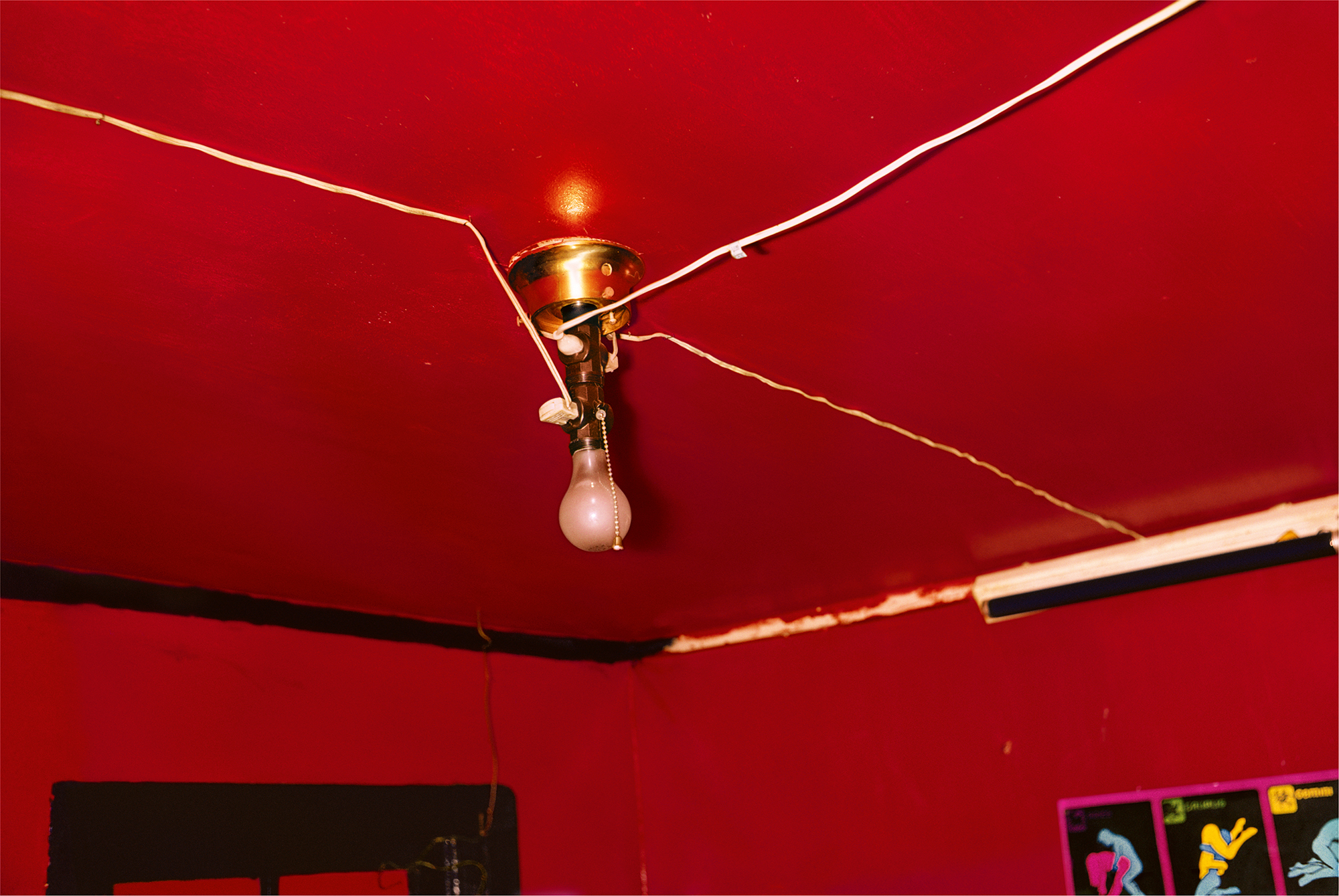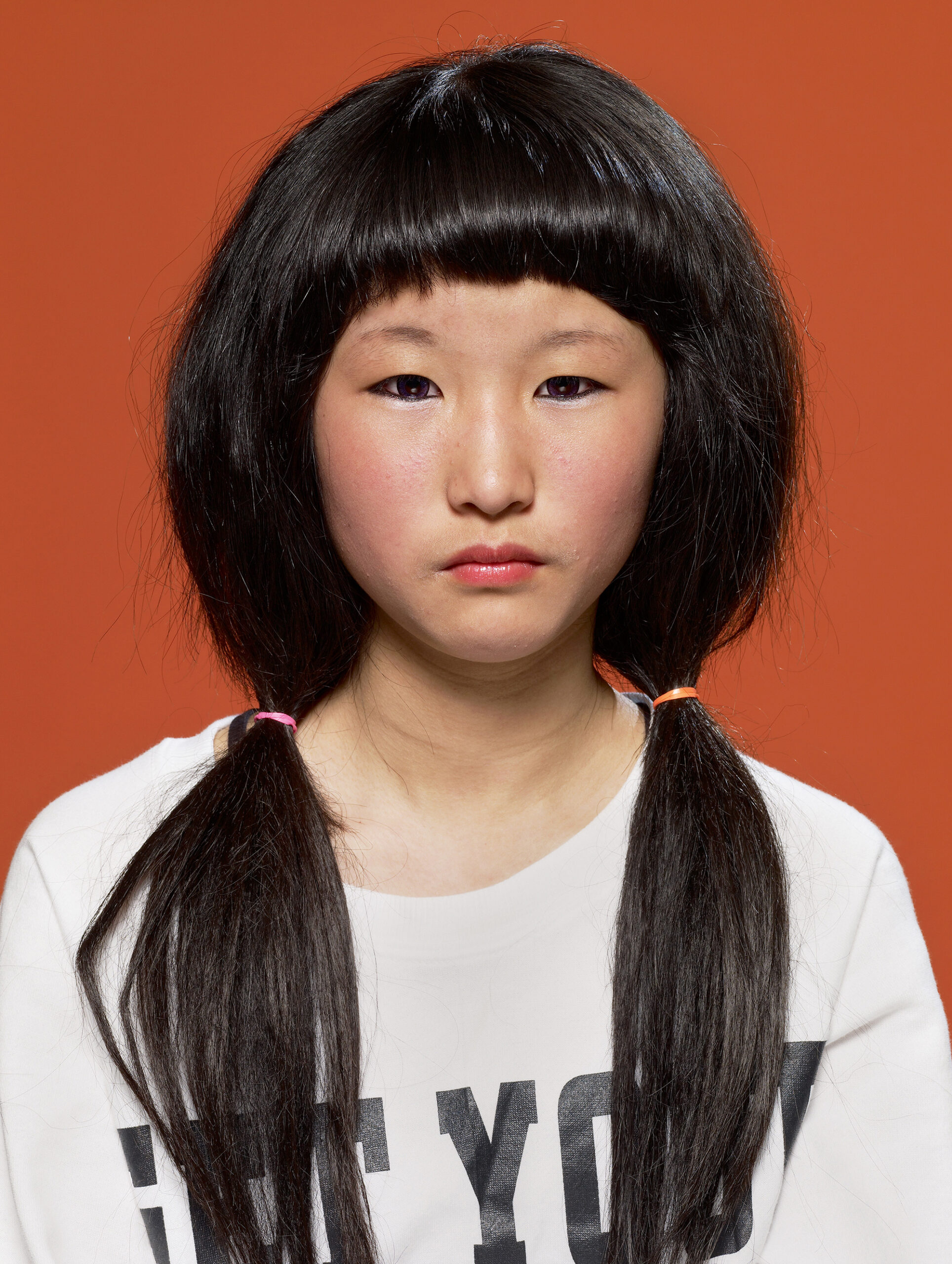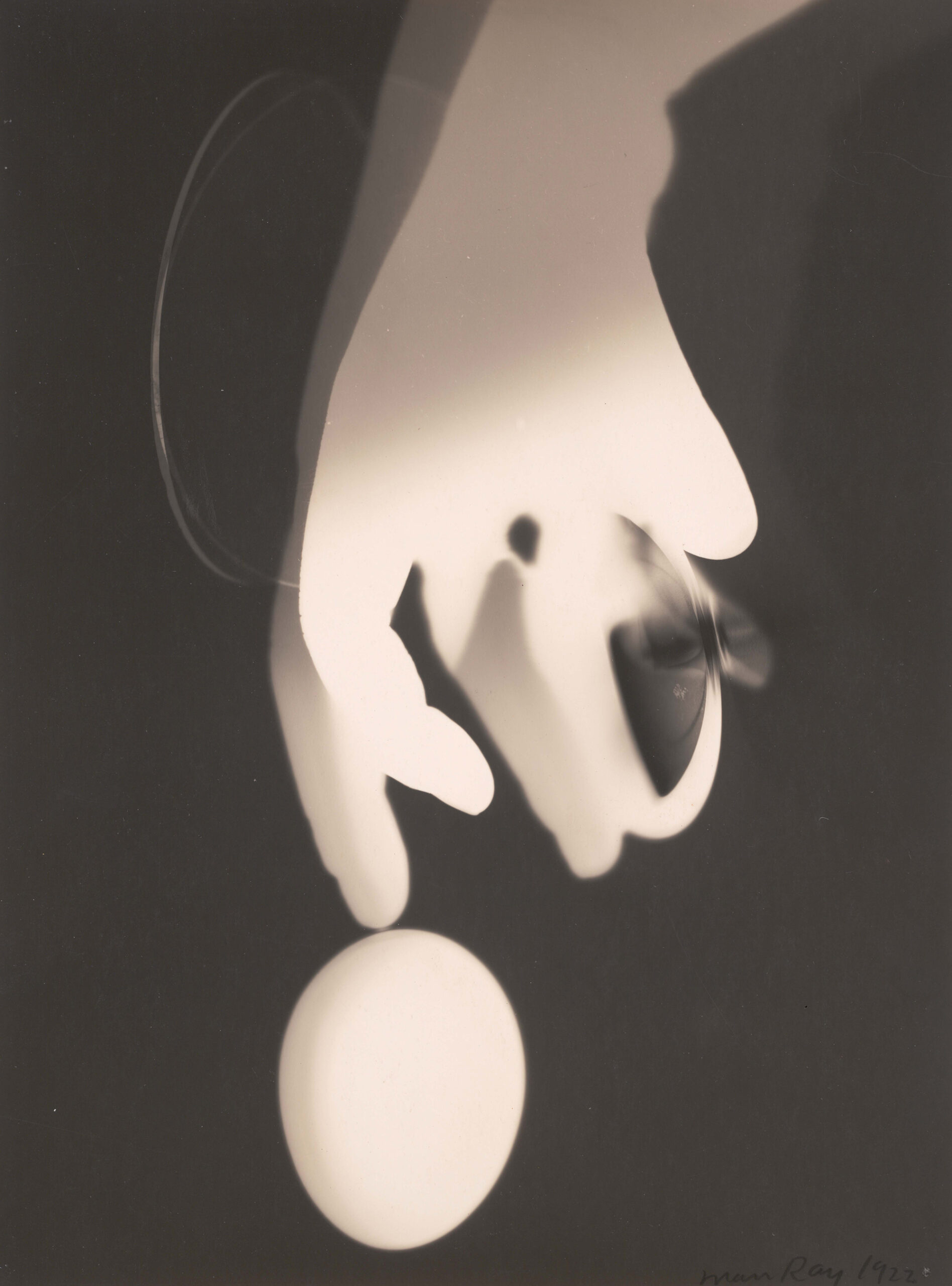
Featured
Announcing the Winners of the 2024 Creator Labs Photo Fund
Presented by Aperture and Google’s Creator Labs, the fund provides financial support to thirty photographers at formative moments in their careers. Here, meet the winners, recognized for their exceptional artistic visions.
Google’s Creator Labs and Aperture are thrilled to announce the winners of the 2024 Creator Labs Photo Fund—an initiative providing financial support and visibility to encourage artists at formative moments in their careers. Inaugurated in 2021, the Creator Labs Photo Fund is now in its third season, continuing its mission of supporting image makers. In partnership with Aperture, Creator Labs Photo Fund provides one-time $6,000 grants and a Google Pixel device to thirty artists working in photography and lens-based practices.
The winning artists of this year’s Creator Labs Photo Fund are:
Farah Al Qasimi, Luke Austin, Bruce Bennett, Morganne Boulden, Harlan Bozeman, Oyè Diran, Brayan Enriquez, Camille Farrah Lenain, Naima Green, Pia Paulina Guilmoth, Shravya Kag, Mary Kang, Brian Van Lau, Spandita Malik, Dom Marker, Ana Rosa Marx, Will Matsuda, Steven Molina Contreras, Rachelle Mozman Solano, Mathilde Mujanayi, Anh Nguyen, Nathan Olsen, Obinna Onyeka, Andina Marie Osorio, Tanner Pendleton, Chris Perez, Mateo Ruiz González, Jennifer Sakai, Rachel Elise Thomas, and Jaclyn Wright.
“Aperture is excited to recognize the depth and rigor of these thirty selected artists,” notes Brendan Embser, senior editor at Aperture. “Our partnership with Google on the Creator Labs Photo Fund remains central to our mission to support artists and shape critical dialogues about photography today.”
Below, read more about this year’s winning artists.
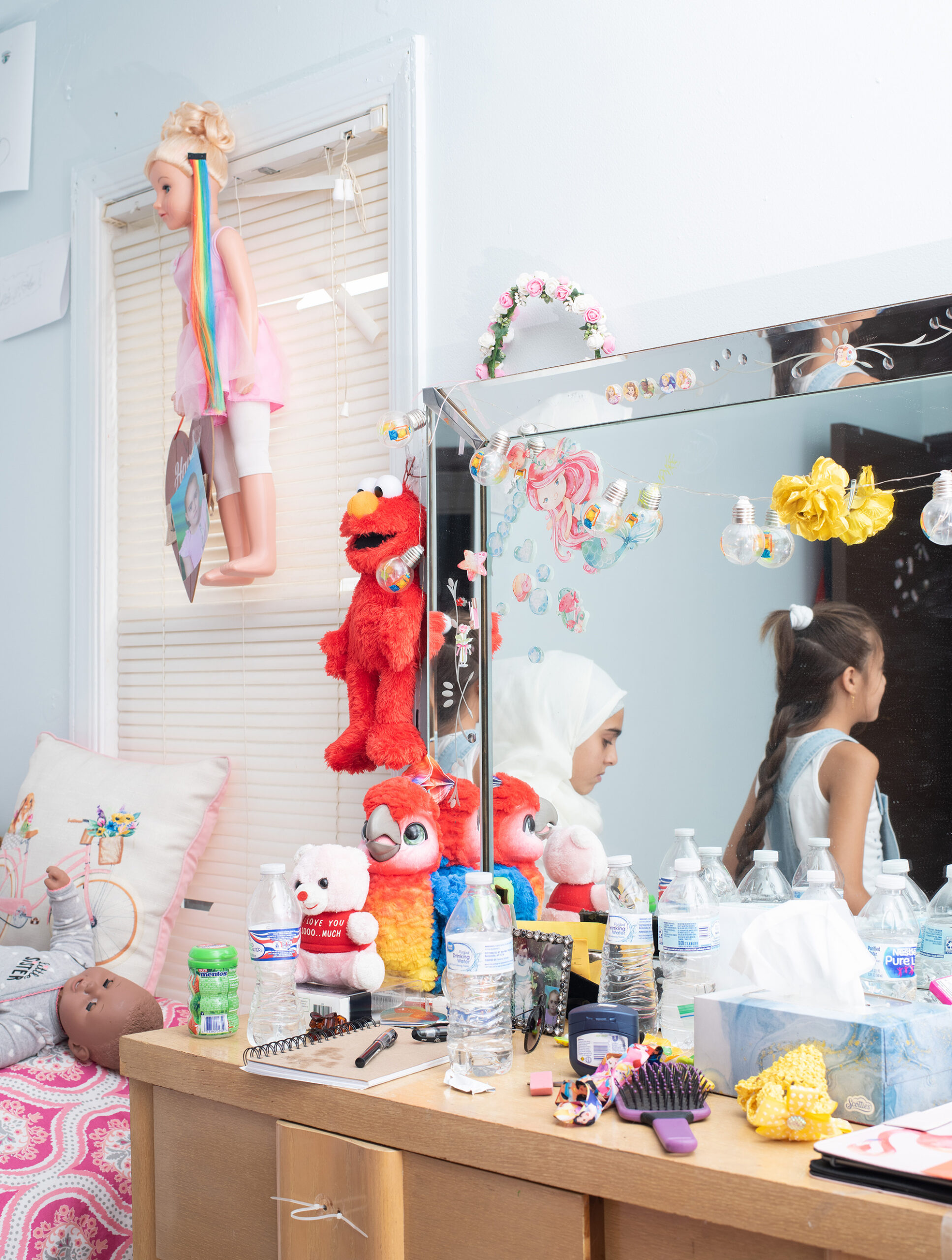
Farah Al Qasimi
Dearborn, Michigan, is home to the largest concentration of Arabs outside the Middle East. Its first immigrants were workers for the Ford Motor Company, and successive generations arrived from Iraq, Lebanon, Palestine, Syria, and Yemen, many fleeing conflicts fueled by US intervention. Farah Al Qasimi first visited the city in 2019. There she met people wrestling with an ever-growing presence of anti-Arab sentiment. “Since then, I have tried to find excuses to return,” she says. Brotherville is a product of this sustained engagement. Al Qasimi grew up between the UAE and the US, and her photographs investigate the anxieties of immigration and diaspora in a post-oil world. In one image that slips between the metaphorical and documentary, a woman looks out at the Marathon oil refinery, a major pollutant in the area, framed between its signage and two McDonalds cups. “I have embodied that duality for all of my life,” says Al Qasimi, on balancing US assimilation with preserving her own identity, “and this is what draws me to this place again and again.”

Luke Austin
Near the end of 2020, stuck at home, Luke Austin experimented in the studio. Gathering self-portraits from men he followed on Instagram, Austin printed the images on paper, cut out the figures, and began a process of rephotographing the photo-sculptures he created. The two-dimensional became three-dimensional, then two-dimensional again. “There is something hollow yet rich about the silhouette cast from a cutout image of a person,” Austin says. “This work explores that, encouraging the viewer to look beneath the surface.” The series title, A Dislocation of Time, comes from a David Wojnarowicz journal entry; years later, it feels apt to the situation in which Austin made these images, as he reflected on a time-consuming process of photo-making, collaborating with men he met online while quarantining during a global pandemic. “I’ve spent the last few years thinking about the people who aren’t in my life anymore,” he says, “and I think subconsciously that showed up in the ghostly figured shapes and shadows in the works.”
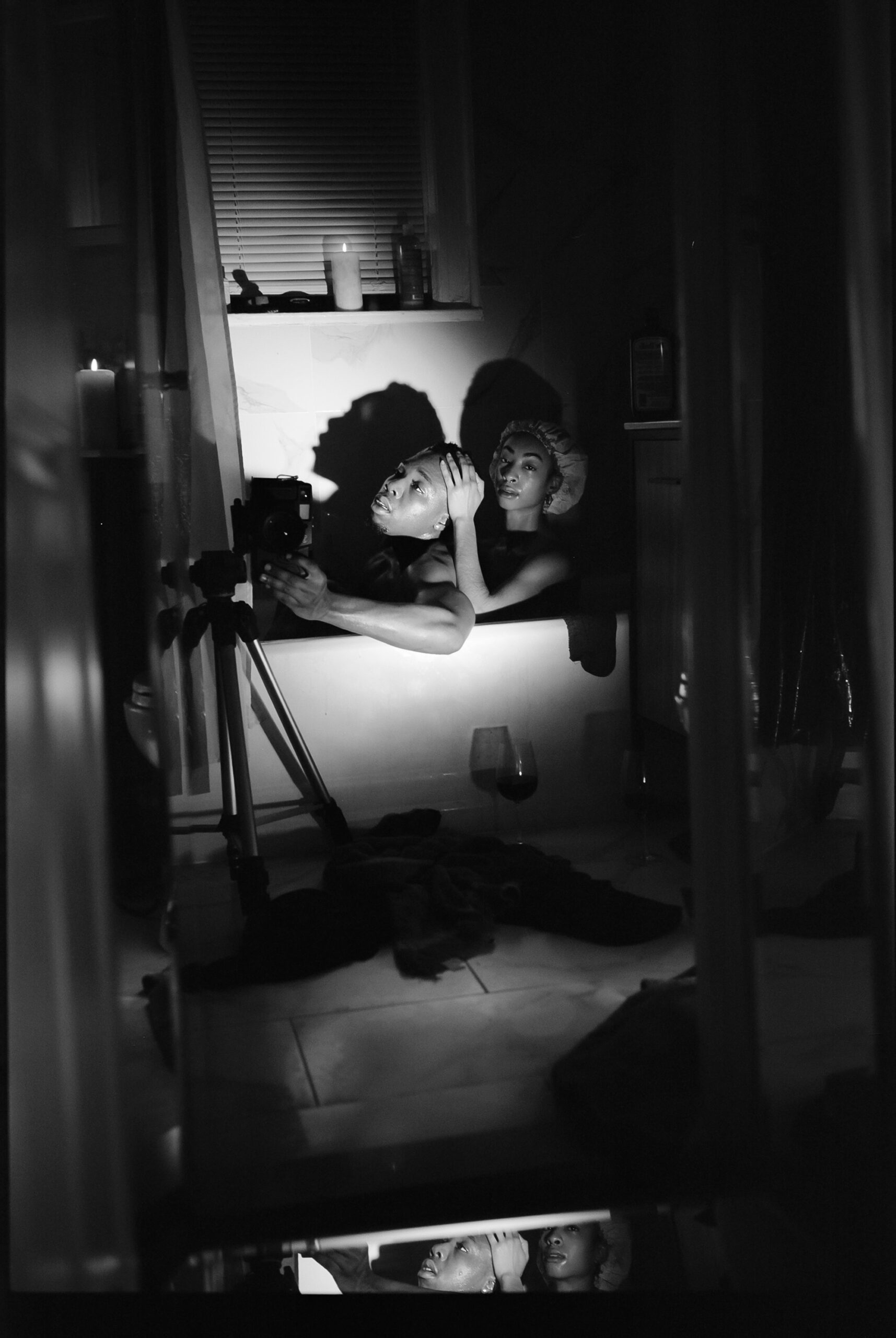
Bruce Bennett
The relationship between the photographic gaze and Black love is central to Love II, a series by Chicago-born and New York–based artist Bruce Bennett. Through black-and-white portraits and self-portraits with his partner, Bennett brings his imagined viewer into an intimate, egalitarian conversation. In a careful subversion, the subjects of this invited gaze—who almost always look back—reclaim agency. They become coconspirators in a style of representation that demands their presence. “I’ve always dreamed of seeing myself in the third-person perspective,” says Bennet. In one image, Bennett sits with his partner in their bathtub, her hands wrapped around his forehead as he points his lens to a mirror that reflects the scene. While Bennet’s head cranes lovingly toward her, casting a shadow on the bathroom wall, her eyes remain fixed on us. This charged exchange, between them and us, is a fulcrum of Bennet’s work. “We want you to feel the contact and energy,” he says.
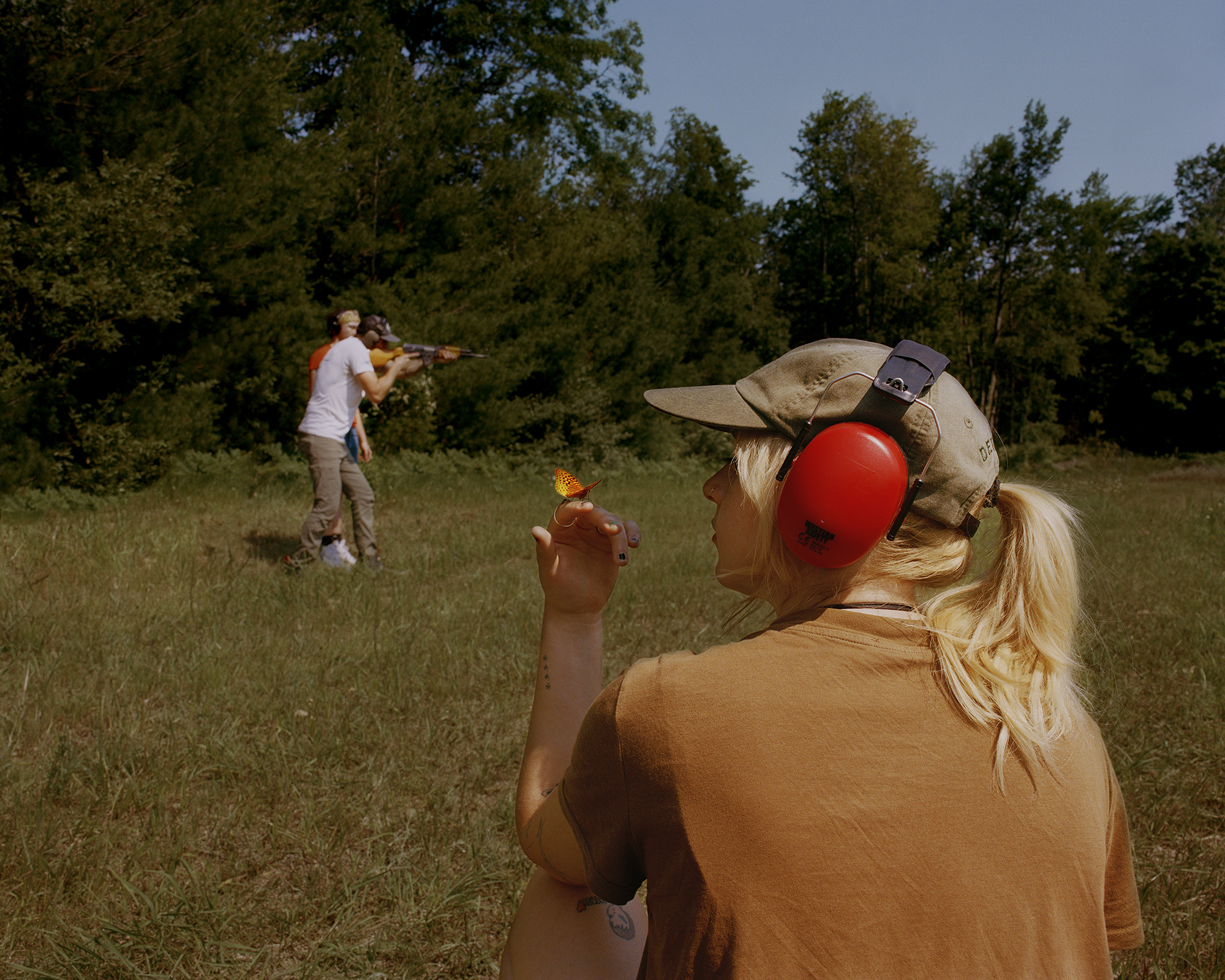
Morganne Boulden
From Robert Frank to Ryan McGinley, the allure of the open road permeates American photographic history. Morganne Boulden’s When Flies Sit Still contributes to this rich lineage with the eerie solitude of the post-pandemic era. Since 2020, Boulden has made multiple cross-country road trips, intuitively capturing various scenes and friends along the way, in North Carolina, Missouri, Colorado, Nevada, and more. The result is a photographic map of disillusioned young America, though Boulden thinks of each photograph as the conversation surrounding it rather than a singular moment in time. “Times have been changing very rapidly,” she says. “Being able to have that conversation, and to capture a moment when that conversation is happening, is something that helps me deal with everything.” In Michigan, she photographed a young woman at a shooting range, a butterfly perched on her finger as a man aims and fires in the background, a beautiful moment of quiet amid the noise.
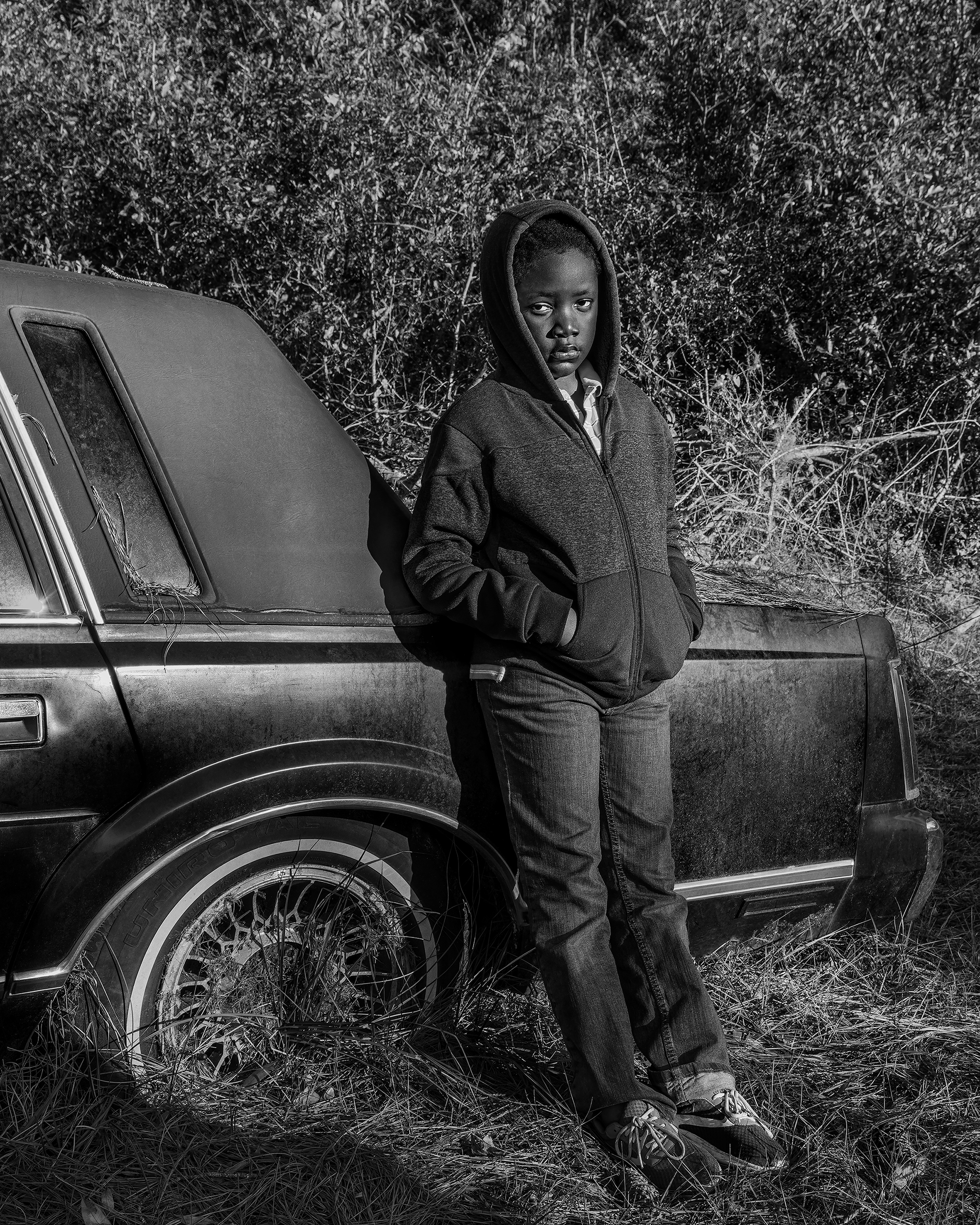
Harlan Bozeman
The Elaine Massacre is often overlooked in US history. In 1919, a gathering of formerly enslaved Black sharecroppers organizing for fair payment was disrupted by several white men, one of whom was killed. The ensuing racist hysteria led to a white mob, including federal troops, indiscriminately killing hundreds of Black farmers and their families. “As someone who was raised in Arkansas, I was upset that I had never learned about what took place there so long ago,” says Harlan Bozeman. His series Out the E captures how this history continues to shape the lives of contemporary residents of Elaine, where the school district closed in 2005. Bozeman’s role exceeds photography; he is also a facilitator and collaborator. For the past two summers, he has been working with youth at the Elaine Legacy Center, the former elementary school, where he uses photography as a tool for education and self-expression. “I’m helping to ensure that the legacy of Elaine is preserved and carried forward,” says Bozeman. “There is now more to this project than making images.”

Oyè Diran
“To me, the color blue represents the emotional and spiritual experiences I’ve had in my life,” says Oyè Diran, whose series Rêve Bleu unfolds like a visual poem, capturing the dimensions of the color. Born in Lagos and based in New York, Diran cut his teeth in the worlds of portraiture and fashion, publishing with several international brands, including Vogue Italia, CNN Africa, Kenya Airlines, and Afropunk. However, he thinks of his work against a much broader canvas of conceptual photography. Diran’s expansive blue tones endow his subjects—mostly people of color—with a regal grace. Poppy pods, silhouettes, shadow play, and geometric postures all elevate the emotional register of his images. These arrangements come from “an exploration that has required deep introspection,” says Diran. “In essence, I am exploring the human experience.”
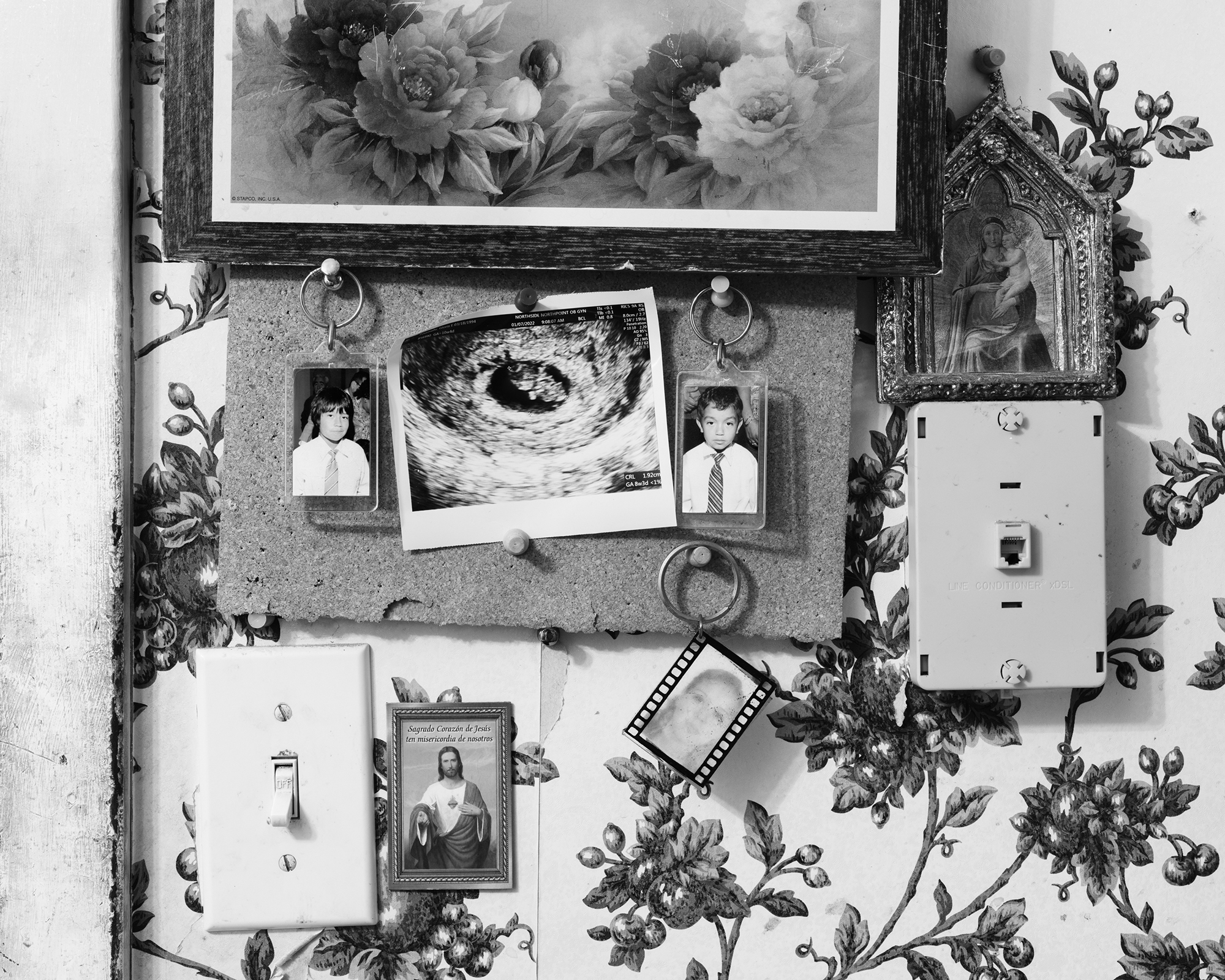
Brayan Enriquez
Born in the United States to undocumented parents who had emigrated from Mexico only a few years earlier, Brayan Enriquez grew up knowing only pieces of their story. “Sometimes that history can go unsaid—can get lost in time,” he says. And Taste the Dirt Below documents Enriquez’s process of uncovering his parents’ odyssey through portraiture and video collaborations with his immediate family. Enriquez obscures some of his sitters, either by blurring them, covering their faces, or photographing them facing away from his camera. “The familiarity I had with my parents hindered me in picture making,” he says. “I needed to create some distance to approach this subject matter constructively.” Distanced as they are, the photographs are unmistakably intimate views into the domestic life Enriquez’s parents made in Atlanta. Shoes sit idle in an entryway, keychain photos hang next to a printout of an ultrasound. Set within his childhood home, And Taste the Dirt Below creates a refuge for Enriquez to tell his own story.
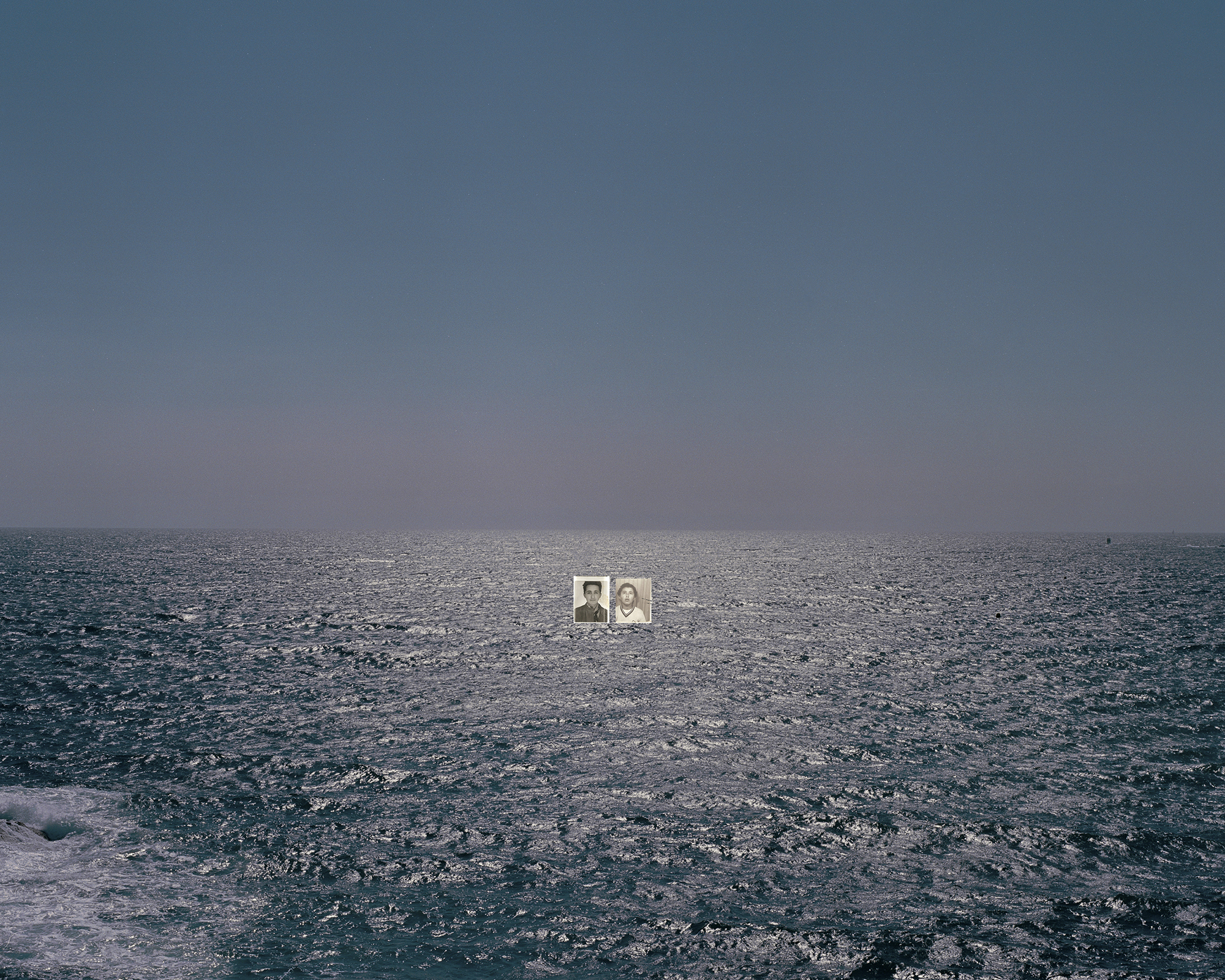
Camille Farrah Lenain
How to represent those who have been made invisible? How can portraiture address the endangerment visibility also creates? Made Of Smokeless Fire, by the French Algerian photographer Camille Farrah Lenain, represents the experience of queer Muslims in France against photography’s historically troubled dynamic of visibility and invisibility, power and consent. For Farrah Lenain, who now lives between Paris and New Orleans, what we don’t see is as important as what we do. Her sitters are often anonymous, while their presence and testimony takes center stage. “My approach to portraiture has a double function,” she says. “It hides the identity of the participants for their own safety and comfort, but also sheds light on the experience of invisibility in society and religion.” The project has a personal origin. It began as an homage to her beloved uncle, who lived with diabetes and AIDS and died in 2013; amid her portraiture, Farrah Lenain interjects archival imagery of him, drawing a broader connection. In a refusal to categorize what it means to be queer and Muslim in France, she instead asks: “What does silencing an identity look like?”
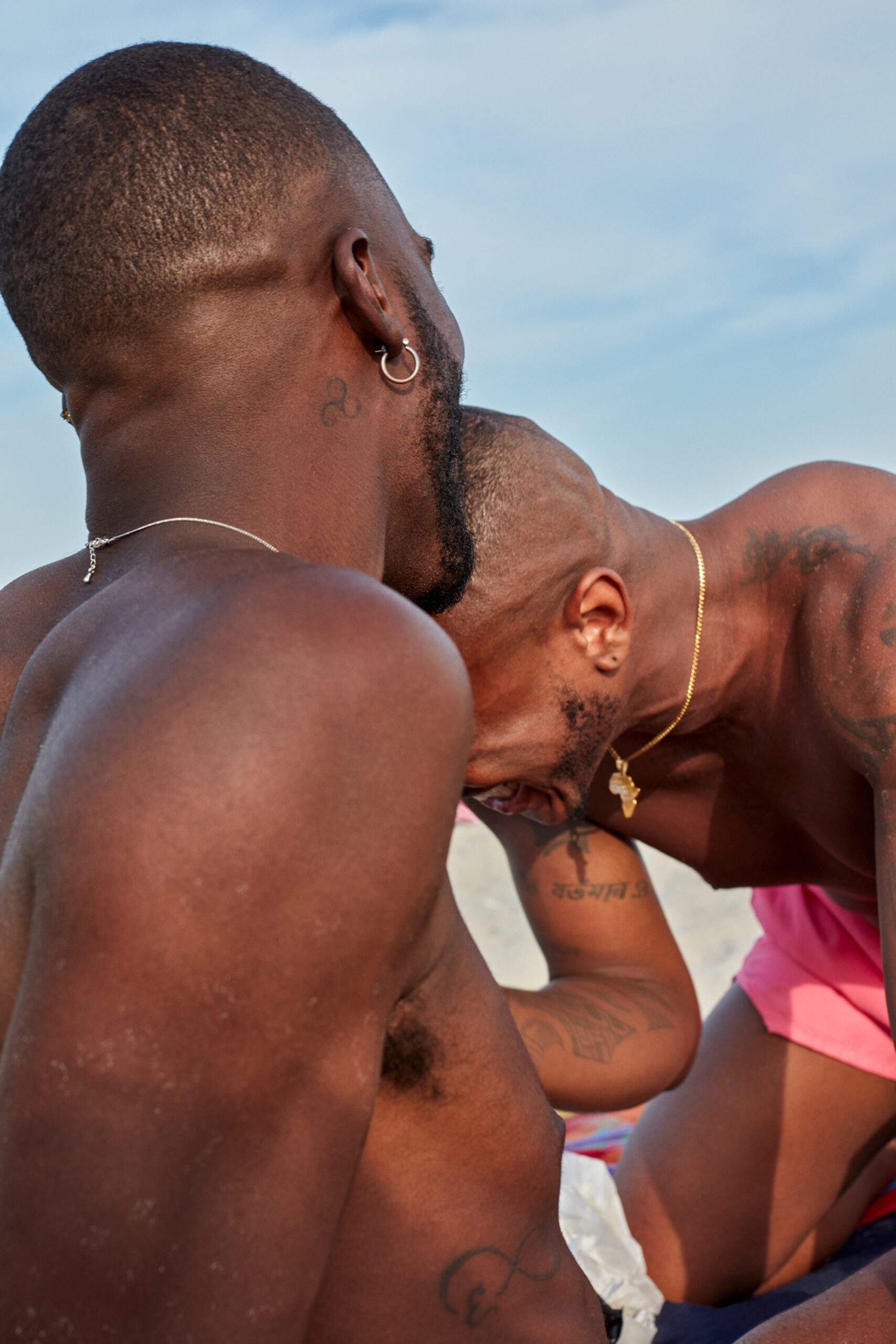
Naima Green
“The beach and being near the water have always been a site of freedom, a safe space, especially during the height of the pandemic,” says Naima Green. Photographing friends and collaborators within her community, Green navigates the symbolism of water, finding and pushing its boundaries in order to better understand queer life in the contemporary world. Her series I Keep Missing My Water spans locations, from the ocean at Jacob Riis Park to a constructed studio set. “I started at the edge of large bodies of water and moved into smaller vessels: faucets, carafes, boiling pots of salty water, a bowl on the altar, a glass,” says Green, “places around domestic spaces that are mobile through different homes and thresholds.” Green’s camera often catches an embrace, on the studio floor or on the beach, waist deep in the tide, one woman’s hand resting on another’s pregnant figure. Throughout, a sense of community prevails—fluid in the spaces Green inhabits, but preserved in each moment of her photographs.

Pia Paulina Guilmoth
Maine-based photographer Pia Paulina Guilmoth’s series flowers drink the river reflects on her deep, evolving, and complex relationship to her surrounding landscape and community. “I live in a rural, predominantly right-wing town,” says Guilmoth. “When I started (medically) transitioning last year my relationship to this place, this landscape, changed drastically.” Her compositions present a transfixing, dreamy utopia, where the cover of night allows phenomena that teeter on the knife-edge of reality—moths circle the waxy drip of a lone candle, five hands stretch out a glimmering spiderweb, luminous figures of dust emerge on a dirt road. Photography is meditative for Guilmoth, who uses a large-format camera and often needs several rounds of trial and error to get each living element to remain in frame and focus. Her photographs have evolved with her. “I started this series before I started my transition,” says Guilmoth. “This work was a release of emotions and compassion for life and for living my truth.”

Shravya Kag
Shravya Kag navigates two worlds: her adopted home in Brooklyn and Vijayawada, her hometown in southern India. “It takes 24 hours, door-to-door, to travel from the current version of myself to an old, familiar one in my hometown,” she adds. Kag’s evolving genderqueer identity and its expressions stretch across this iterative journey, and form the focus of her series వెళ్ళొస్తా , which translates, in her native Telugu, to “I will go and come back.” Over the last four years, and several trips, Kag has attempted to observe—with great care and strength—how a place can form a person, and then question how a person might exert agency over that formation. In negotiating the internal and geographical split between her current gender nonconforming self and a nostalgic, traditionally gendered self, Kag uses photography to construct a space for reflection. We see her trying on a chudidar for a friend’s wedding, her father hidden behind the morning paper, her mother in the middle of prayer. Each photograph contributes to a larger picture, where the goal is not just reconciliation, but understanding, and more importantly, compassion.
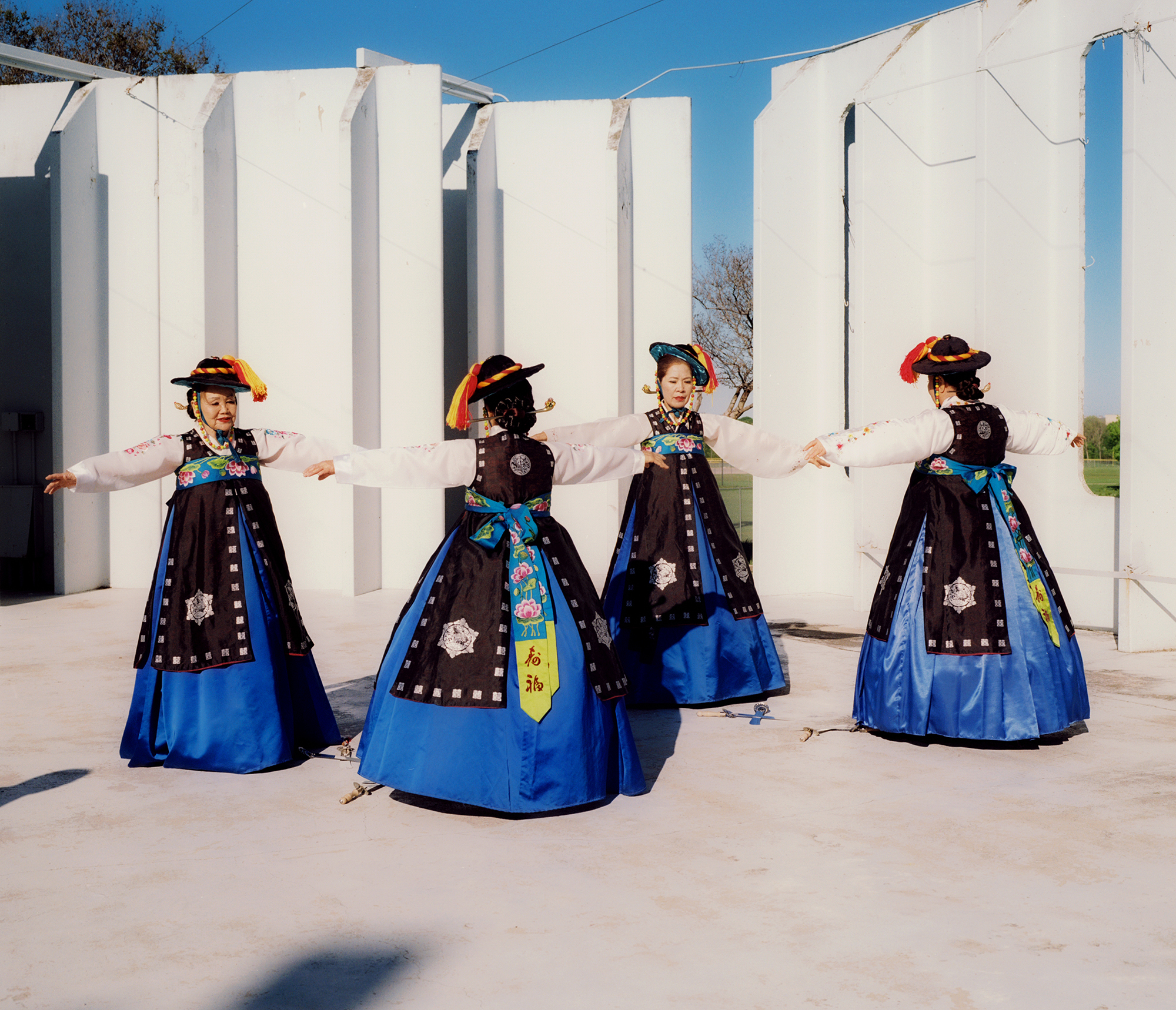
Mary Kang
Growing up in Austin, Texas, Mary Kang and her mother would make frequent grocery trips to the neighboring city of Killeen, which had a significant Korean community. Years later, in college, Kang studied the history of the women who immigrated to the United States—including to Killeen—after the Korean War, and their experiences of racial stereotyping and oppression. These women were pejoratively called “military wives,” and presented as vulnerable and dependent, obfuscating their role as resilient community builders. On seeing a tongue-in-cheek resurgence of the term among TikTok fans of the Korean boy band BTS, Kang became curious about the power of existing media narratives and the role of historical amnesia. In Norigae, Kang documents the personal stories of a group of military wives practicing and performing traditional Korean dances in Killeen and across Texas. “In mainstream journalism, we are often consumed with depictions of marginalized communities suffering,” say Kang. “My goal is to share their stories in a way that honors them beyond the stereotypes and limitations imposed by society.”

Brian Van Lau
When his father was diagnosed with brain cancer in 2019, Brian Van Lau traveled from the US to Vietnam to see him. Their relationship had been fractured since Lau was young, and the trip began a years-long visual investigation of a complicated family history. We’re Just Here For the Bad Guys comprises photographs from their time in Vietnam with images of Lau’s family in the Pacific Northwest and his birthplace, Hawaii, and documents from the family archive. A distinctly coherent mosaic of black-and-white photographs collapses decades of history into one ongoing narrative. (Lau’s father began treatment, but he died in 2020.) “I had always framed the project as both a moment of catharsis and as a moment of condemnation,” says Lau. Finding parallel images across time to illustrate his father’s return into his life, Lau interrogates what this relationship means to him.
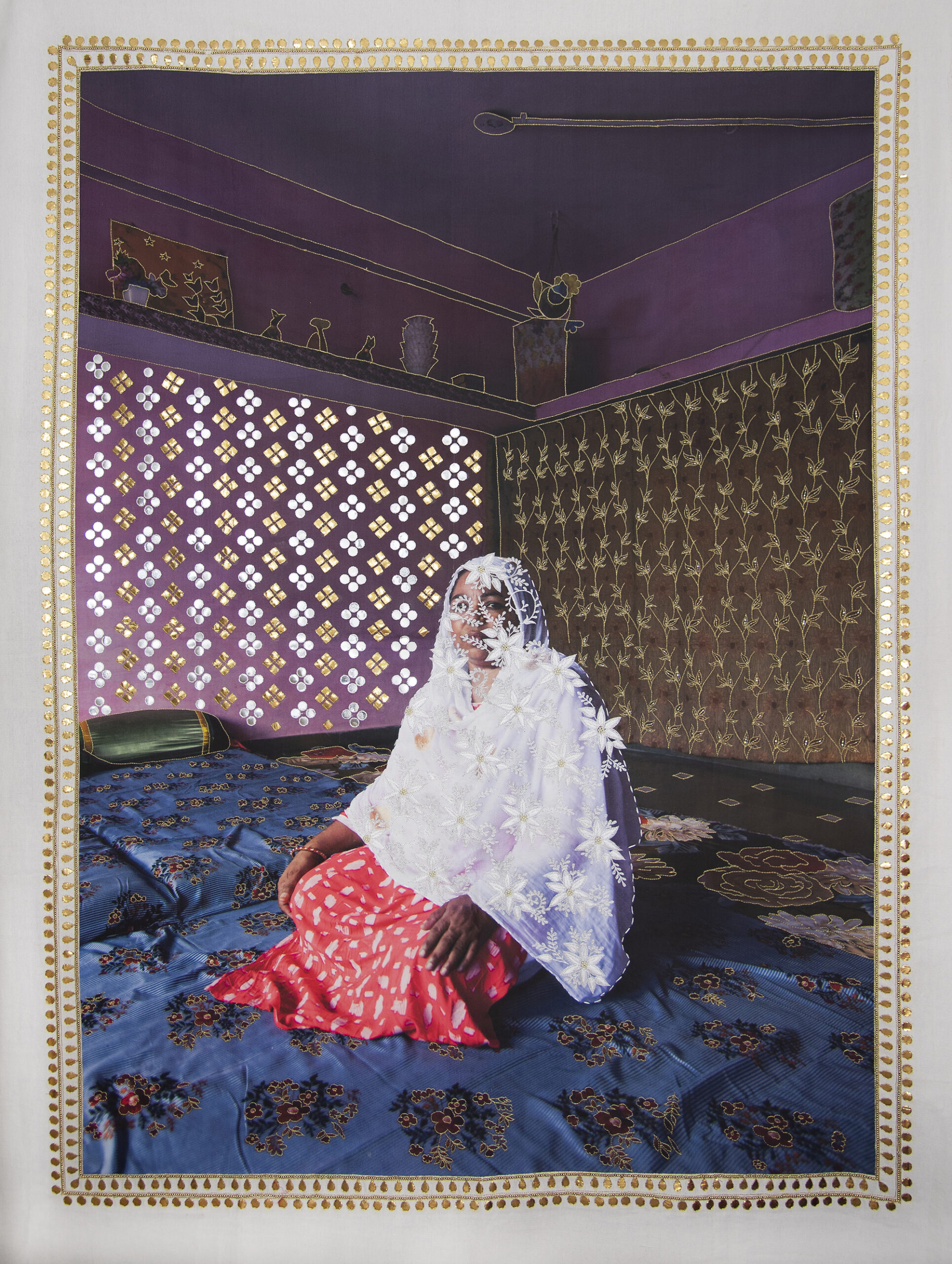
Spandita Malik
Spandita Malik’s collaborative series of embroidered photographs, Jāḷī, gives a voice to women in India who have survived gendered violence. For the past five years, Malik has worked within women’s shelters across the country to make portraits, which are then printed onto local homespun muslin and embroidered by the women in the images. The results are distinctly personal works of art—Malik’s portraits become a canvas for each woman to express an individuality that is often stripped away in discussions of domestic abuse survivors. Malik was in graduate school when she made the images, and realized that her photographic education leaned strongly on a Western perspective. “I started being very conscious of that when I started photographing the women,” she says. “I might never be able to get rid of the bias that I have in photographing my own country. What I can do is start sharing power in creating a narrative.”
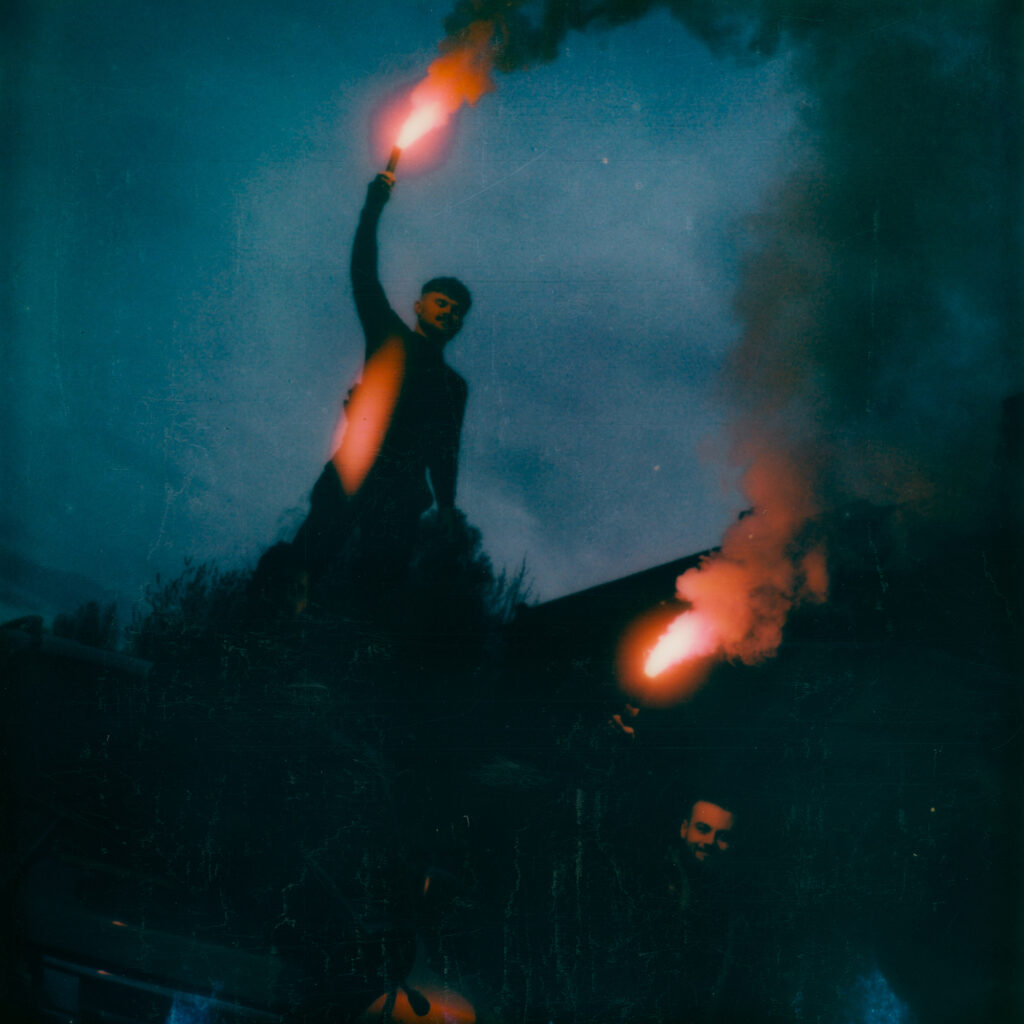
Dom Marker
Soon after Russia’s full-scale invasion of Ukraine in early 2022, Dom Marker returned to the country his family left when he was just three years old, primarily to volunteer with frontline humanitarian organizations. Over time, with a patient eye and an instant Polaroid SX-70 camera, Marker began to make portraits and photographs of the scenes around him. “There was no shortage of journalists in the region,” he says. “The idea was that maybe we could still make our own family album, for me and my friends, as defiance against the void.” Marker’s images challenge traditional conflict photography. The photographs in Borderlander and their subjects—Fynn, Maksym, and Stas holding flares against the night sky; Alex and Georgie leaning against one another, shirtless torsos smeared with ink—each capture an authentic human relationship. Pointing to various influences, from Boris Mikhailov’s Polaroid photographs, to the Kharkiv School of Photography and Susan Sontag’s writing on conflict photography, Marker understands the context of these photographs within this historical moment. “Witnessing is no longer enough; participation is necessary,” he says.
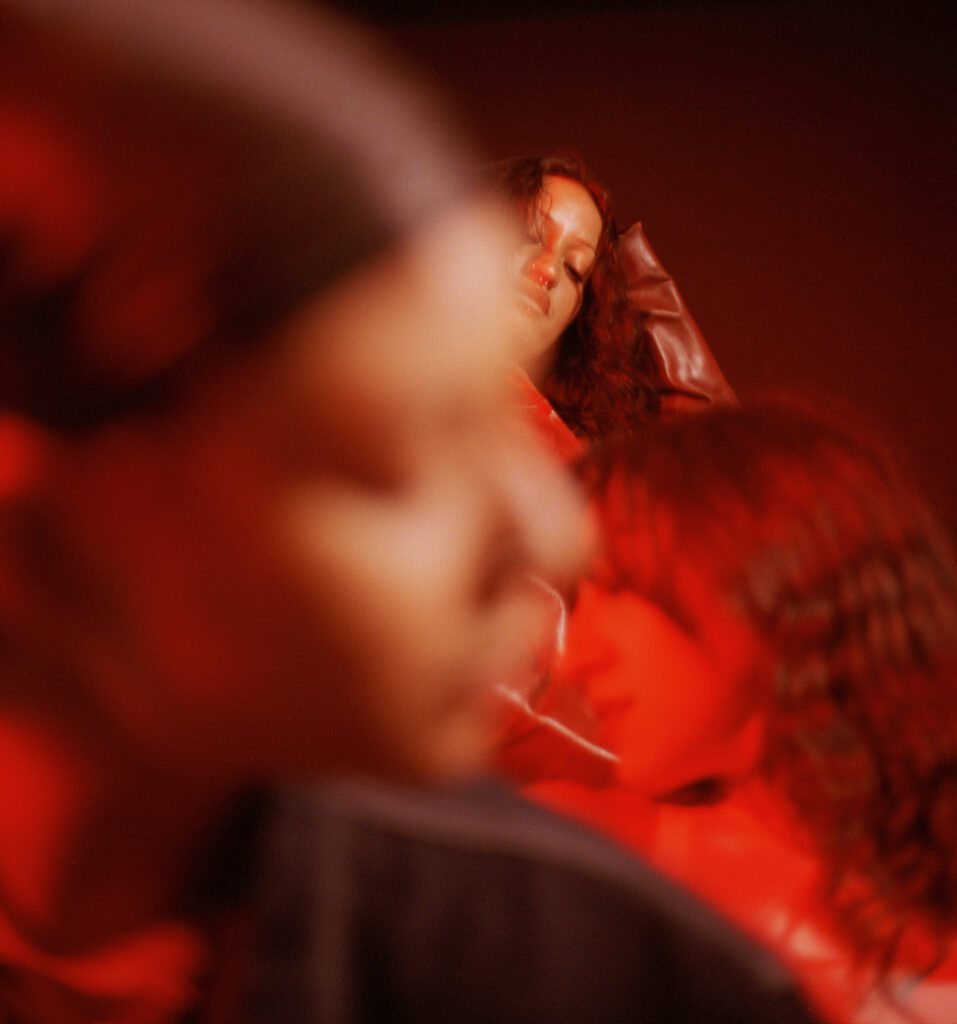
Ana Rosa Marx
Ana Rosa Marx is drawn to the role of the trickster. “The trickster in mythology is someone who uses their knowledge to disrupt, to challenge and disobey normative structures of hierarchy and power,” says Marx, who grew up between Chicago and Havana. Her series The Aphrodite presents a speculative, mixed-media account of the cruising scene at a fictional lesbian porn cinema in 1980s Times Square, reconstructing an imagined history where an actual one was erased. Marx draws from real locations, such as the Fair Theater in Queens, the last porn cinema house in New York. Her cast of characters is people from her own life, and her restagings take on “a kind of performance documentation,” featuring photography and ephemera that ask what vision a ritual of reimagining might offer for more inclusive futures. Marx’s portrayal engages with a tradition of thinkers and artists who came before her, including Samuel R. Delaney, David Wojnarowicz, Saidiya Hartman, Walid Raad (another trickster), Isaac Julien, Janet Cardiff, Zoe Leonard, and more. “I want my work to stoke that inner-child desire to believe,” says Marx, “for fantasy to be a place of rapture.”

Will Matsuda
Will Matsuda’s grandmother never talked about Hiroshima. Recently, his family uncovered documents showing that members of her family had died in the bombing. Hiroshima carries its history in moments trapped in light—the photographer Kikuji Kawada began his seminal work Chizu documenting the permanent shadows left on walls by the bomb. In Hibakujumoku, Matsuda sets forth on a new path. The project’s title refers to the gingko trees that survived the bomb and still stand in the city. “There is a strong component of ecological life—trees, animals, rivers,” he says, “that to me speaks to something other than sadness.” In a poetic and abstracted depiction of his family history and the horror of the bombing, Matsuda photographs Hiroshima with a sense of wonder and hope amid the overwhelming context of history. “More than anything, I was thinking about finding a connection to this place for myself,” he says.

Steven Molina Contreras
In photographs made between El Salvador and New York, Steven Molina Contreras’s Adelante portrays a tender view of a family and culture caught between two places, enmeshed in the global story of immigration. Primarily told through softly toned portraits, the narrative of Adelante is its direct English translation: Forward. Born in El Salvador and raised on Long Island, away from much of his extended family, Molina Contreras does not shy away from emotion. His portraits are as familiar as family snapshots: two boys sprawled on a tile floor; an uncle leaning casually against a cabinet. “I’m moved by the intimacy and awkwardness that portraiture allows one to experience and process,” he says. In a self-portrait, he raises one hand slightly, his face covered by the camera and framed inside a mirror on a pink wall. On its own, each image does not attempt to speak to immigration, but as a whole, the series projects a sense of distance, contracted in the intimate space of the portraits. The only direction is forward.

Rachelle Anayansi Mozman Solano
Rachelle Anayansi Mozman Solano’s Venas Abiertas transforms written text into staged photographs. Each image visually reinterprets literary or scholarly source material to depict the effects of policy on individual and collective bodies. In one, a woman’s body splits a cutout of a redwood tree, referencing the redwoods’ early conservators’ ties to eugenics movements in California. The project’s title comes from Eduardo Galeano’s book Open Veins of Latin America (1971), which deals primarily with US imperialism across the continent. For Mozman, the work is both personal and political, stemming from anti-Latino sentiments that came into prominent view during the 2016 election. “I wanted to continue with using historical text in a journalistic way,” she says, “to address the history of anti-Latinx views in our nation and parallel this with a mirroring sentiment today.” Mozman arranges, repositions, and collages her collaborators and various props. The resulting photographs play with viewers’ expectations of studio portraiture, offering an expanded site of historical negotiation.
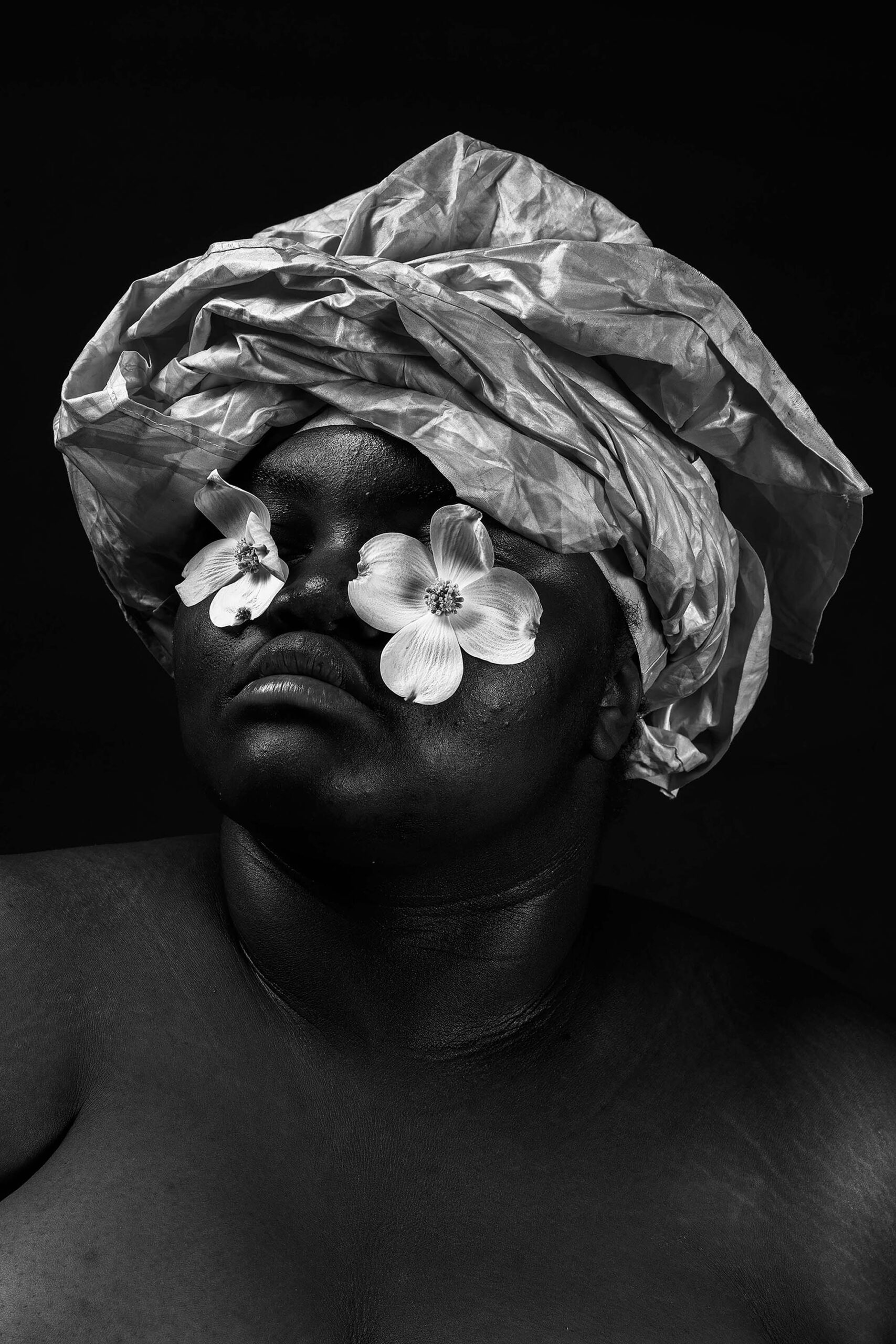
Mathilde Mujanayi
Bringing together self-portraits, still lifes, and staged scenes, the Congolese American photographer Mathilde Mujanayi navigates her identity as an immigrant and a woman living in America for the past twelve years. Her abstract images—a smashed Coke bottle, fabric half buried in sand—read as fleeting memories that Mujanayi searches for meaning, while others, such as a nude self-portrait under a large American flag, are more direct. “How can I close the distance between my land and I, my identity and I, my mother and I?” asks Mujanayi. “What acts can I perform to get me close to that?” As Close As I Can Get To You shows the artist using photography to reach back toward her mother and the culture she left behind. In one self-portrait, Mujanayi, wearing a Congolese fabric skirt, carries a water jug over her head as it drips down her back. “The Congo that I left is not the same Congo that exists now,” she says.
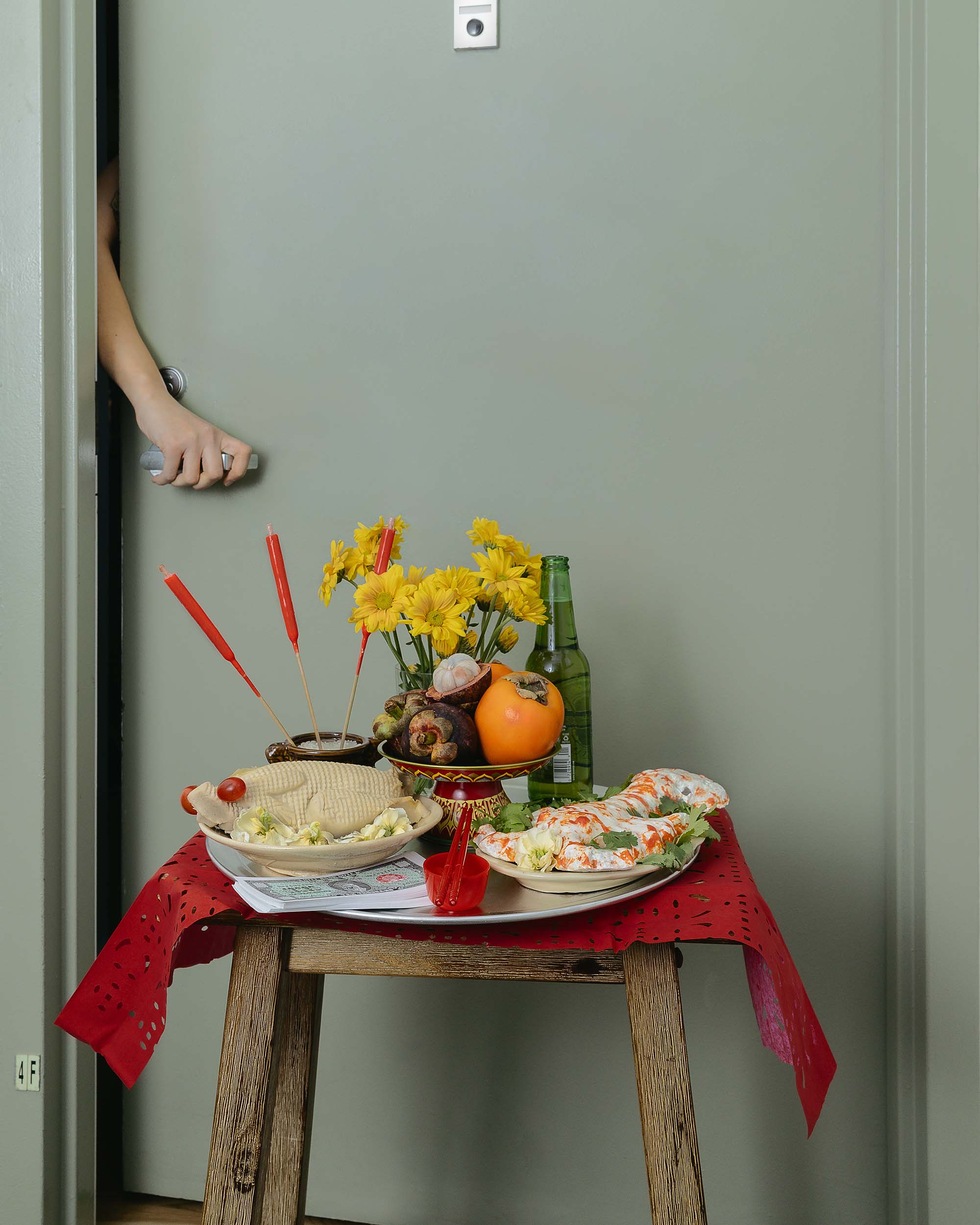
Anh Nguyen
All rituals involve performance. After nearly a decade away from her home in Vietnam, Brooklyn-based photographer Anh Nguyen began evaluating the role of tradition in her life. “Once you take a tradition outside of its original context, it becomes inherently open to interpretation,” she says. Through her staged photographs in The Kitchen God Series, Nguyen shows the performance of cultural traditions refracted in new contexts. The title refers to a popular Vietnamese myth of three figures often placed in the kitchen to watch over the family. Nguyen made the photographs in the homes of Vietnamese people across New York. The resulting images articulate how each subject interprets and adapts their shared cultural traditions in unique ways. In constructing these whimsical commentaries, Nguyen realized she too took on the role of a Kitchen God. “The myth became a playground for me to explore the confines of identity through the exchange of reality and fiction, of myth and personal history,” she says.
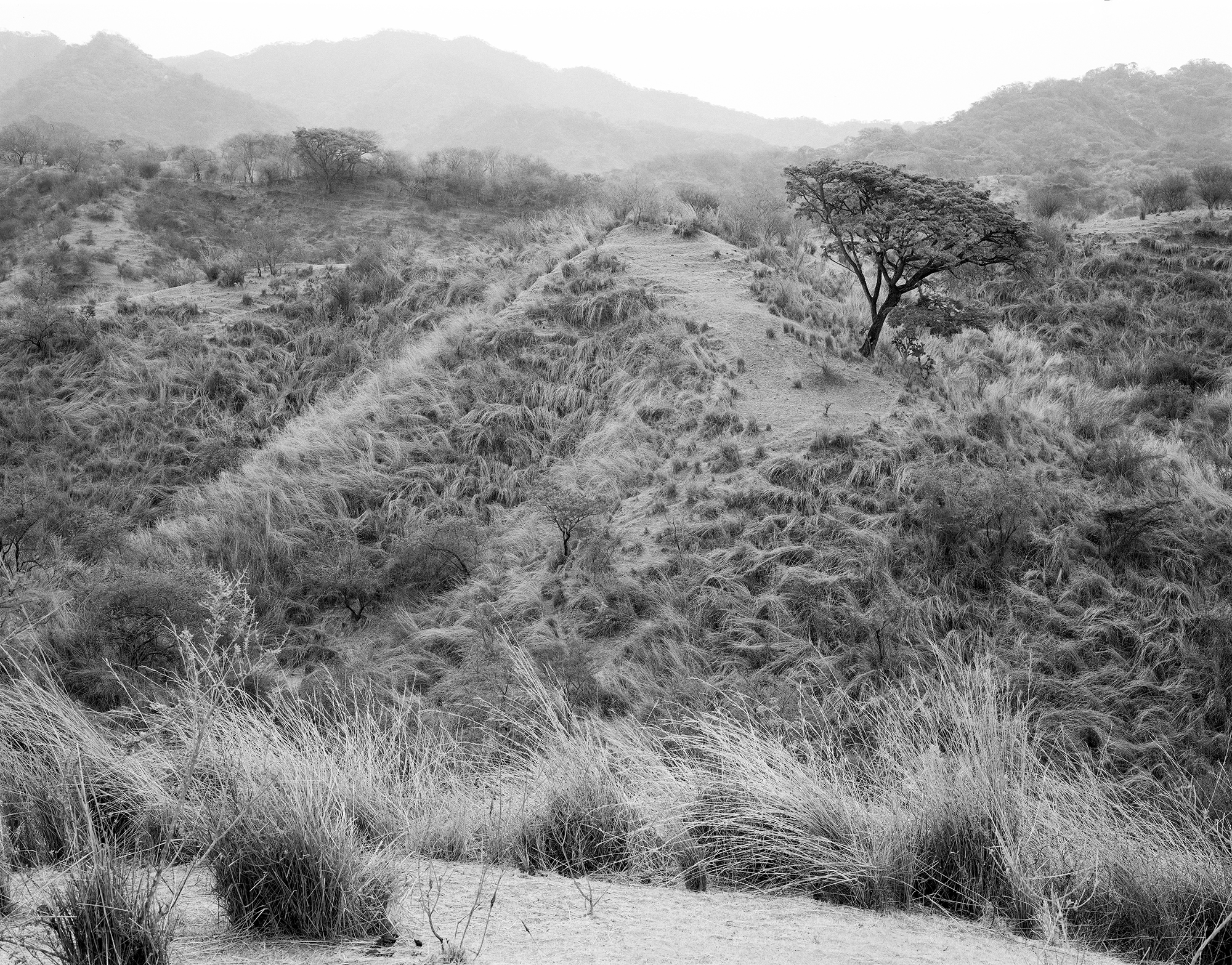
Nathan Olsen
Santa Maria del Oro is tucked into the western Mexican state of Jalisco. The Chicago-based photographer Nathan Olsen first visited his ancestral town to see family, and for the Catholic Feast of Our Lady of Guadalupe celebration, but his exploration soon turned inward, prompting a deeper search. Olsen’s series Touchstone is an attempt to make meaning from the fragments of his mixed ancestry; the title refers to a black siliceous stone used to test the purity of metals, as well as the history of rich deposits of gold in the region. It also functions as a metaphor for his own mixed-race background. “Photographing and spending time in Santa Maria del Oro literally widens the idea of where I come from in a physical and spiritual sense,” says Olsen. His soft black-and-white images, captured with a view camera, give the impression of a place still crystalizing into memory—landscapes and tender domestic scenes where people are barely visible, or facing away. They are hands reaching both ways into time. As Olsen explains: “Exploring the land is an exploration of self.”
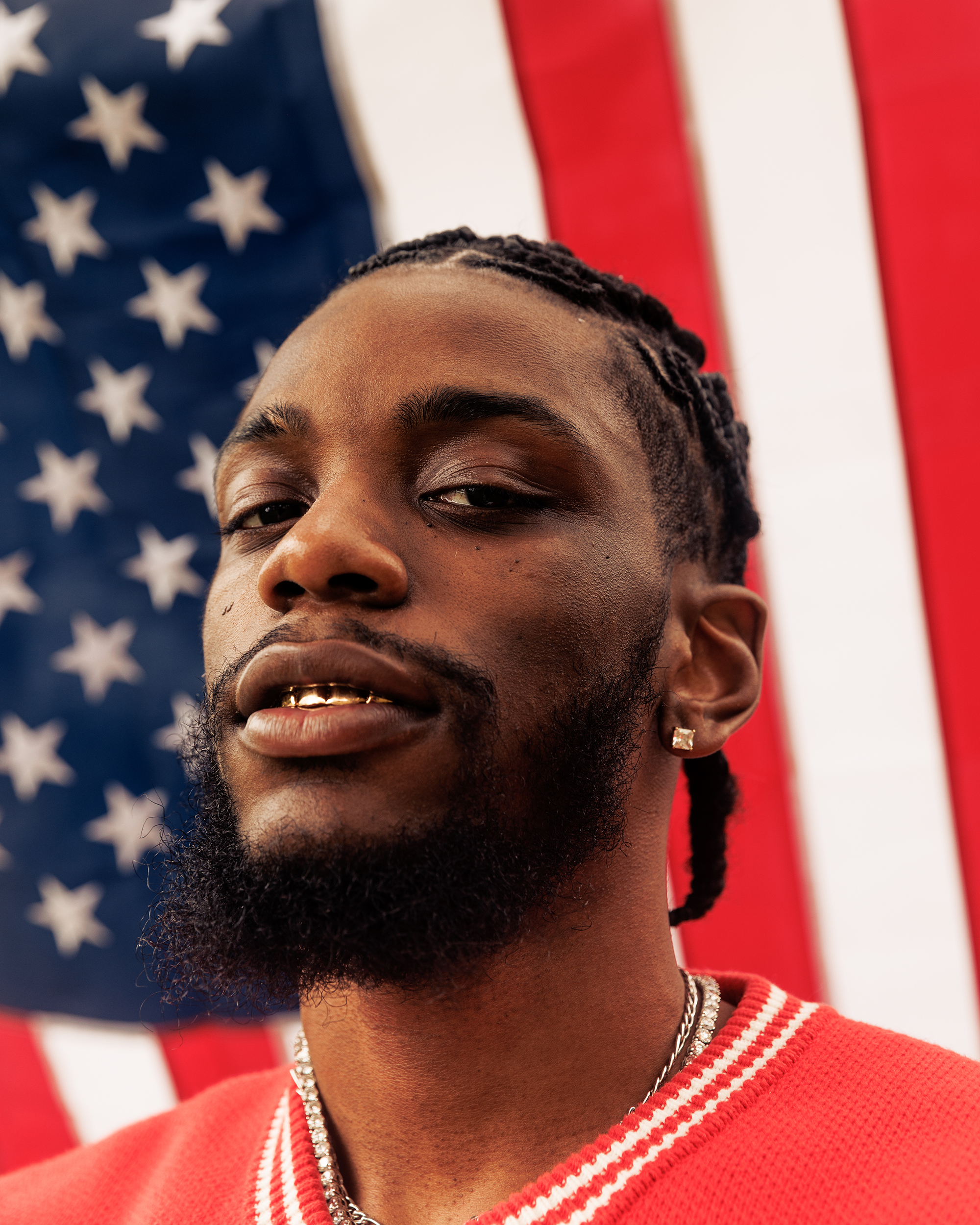
Obinna Onyeka
Two distinct influences define Chicago-based Nigerian American photographer Obinna Onyeka’s visual language. “Fashion photography brings out a stylish boldness and a designer’s editorial sensibilities,” he says. “On the other hand, the family archive carries candid warmth, and a sense of nostalgic presence.” While Onyeka’s commercial portraits of athletes, artists, and broader cultural figures have been published by Nike, New Balance, Red Bull, and the New York Times, his latest project finds subjects closer to home. Interpersonal connection and the Nigerian immigrant experience inspire the title of his series Beyond Distance, and features family, friends, and community members of individual and cultural importance to Onyeka. Combining portraiture, photographs of traditional events, and personal testimonies, the ongoing series aims to present a mosaic of a rich and shared diasporic experience. “I want to make portraits of my friends and family that help us feel close, reflect on our diasporic culture, and deepen our bonds,” Onyeka says.
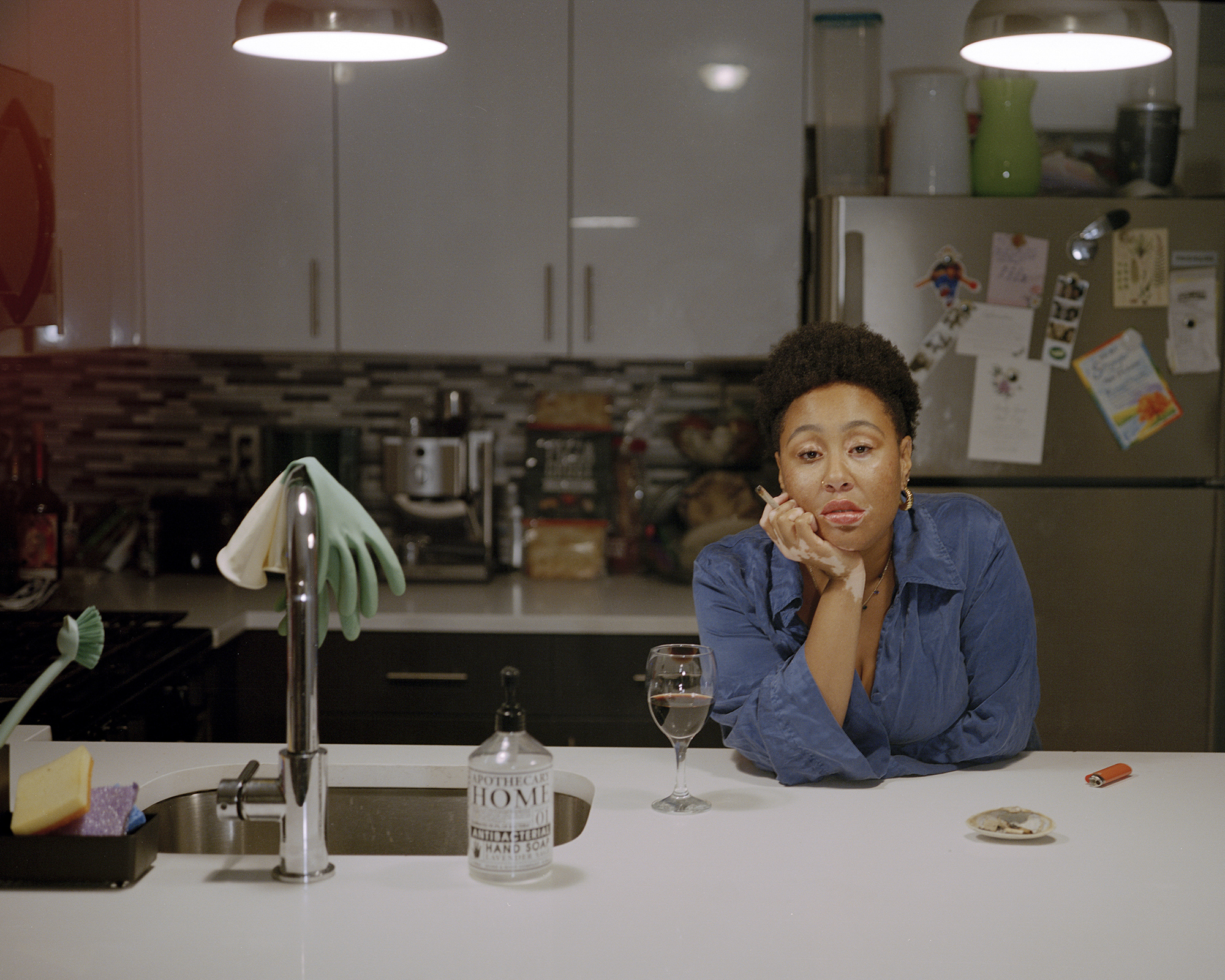
Andina Marie Osorio
“My work is based on other people’s images, things that are deeply personal to me and to my family,” says Andina Marie Osorio. Her series i’m so glad you’re here explores two tangential archives: that of her family , and her own queer photographs made on her Contax T2. “What makes an image queer?” she asks. The sitter? The photographer? Something within the image itself? Drawing upon influences such as Nan Goldin and Wolfgang Tillmans, Osorio’s photographs range from blurred and shadowy intimate moments to a still life of a just-removed IUD. When the work is viewed as an installation, these photographs mingle on the wall among their antecedents in the family archive, newly imbued with nostalgia. Metal sheets hang behind some of the images, which are all printed at different sizes to form a work of assemblage beyond each image alone, providing an alternate narrative—a queer family archive of her own.

Tanner Pendleton
“Photography, to me,” says Tanner Pendleton, “feels like a never-ending exercise in speculation.” In What Does Marble Think As It’s Being Sculpted?, Pendleton explores the limits of photography and science in strongly lit black-and-white images. One set of photographs documents both real and pseudo-science; Pendleton’s interests range from physics to hypnotherapy to new-age spiritualism, but he sums up his work as finding the convergence between the outward search for the cosmos and the inward search for the self. Through exercises in Kirlian photography, which uses high-voltage electricity on film rather than a traditional camera and lens, Pendleton leans into the murky reality of alternative processes, reveling in the loss of control. To him, Kirlian photography is “a spiritual intervention of sorts.” Together, his documentary and experimental work form a wide-reaching, nearly universal questioning of truth. “Blending different formal conventions,” he says, “feels like an opportunity to take things out of context and create a sense of confusion between artifice and reality.”
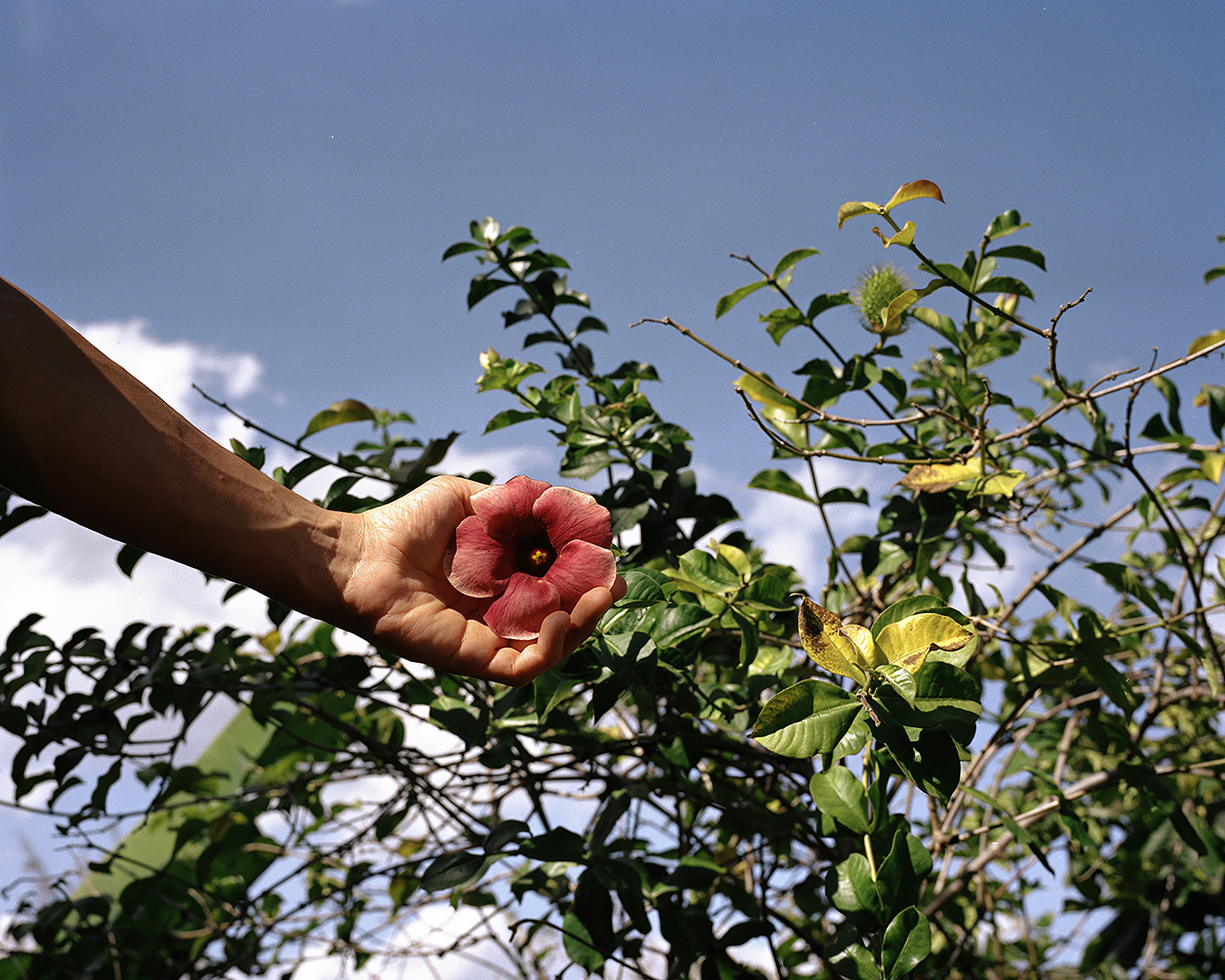
Chris Perez
“I began to take photos as an attempt to learn how to be Dominican,” says Chris Perez. In 2021, during a visit to his father’s birthplace in the northern Cibao region of the Caribbean nation, the New York–based photographer remembered feeling like a foreigner. It was Perez’s first overseas photography trip, and he quickly realized how the camera could serve as a cultural bridge between a familiar and unfamiliar home. Dominican is an ongoing body of work made through several visits since that first experience. Perez’s photographs are suffused with a delicate palette—we are drawn in by the aged pink wall of a small palm-wood shack, or the soft brown of a dirt mound that contrasts the green landscape behind it. Each detail feels colored with the gentle curiosity of a distant cousin returning, each face opens a new story in a widening network. “It is as if photography has given me a way to reclaim something about myself,” says Perez.
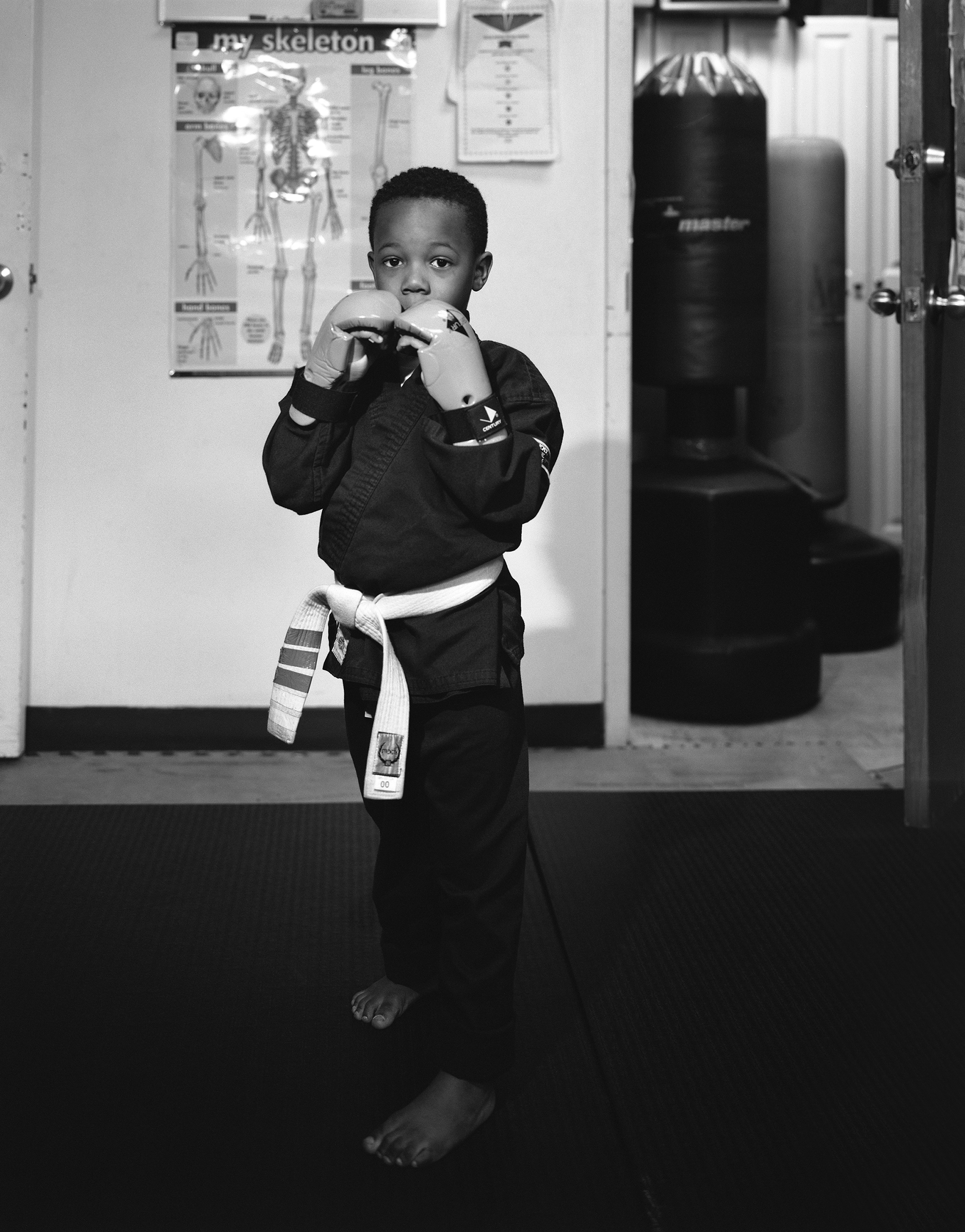
Mateo Ruiz González
Mateo Ruiz González read about Humble School of Martial Arts in Bedford-Stuyvesant in a local Brooklyn news publication. He was moved by the story of its founder, Master Sabu Lewis, who has been a teacher and community pillar for decades, through his school’s financial hardships, COVID-19, and a recent relocation. Ruiz González saw in Lewis a figure that has made Brooklyn what it is, and one who is also endangered by the growing pressures of urban development. “For me, it is a matter of choosing where you stand,” says Ruiz González, who was born in Bogotá and immigrated to Brooklyn eleven years ago. “It’s important to tell the stories of the people that build community.” Humble is a portrait of a school that represents something bigger in a fight against displacement. Ruiz González’s use of a field camera lends his images—specifically his portraits—a candid and personal touch. “I think there’s no better way to photograph than to first make the person in front of the camera understand that there will not be a photograph without their stories,” he says.
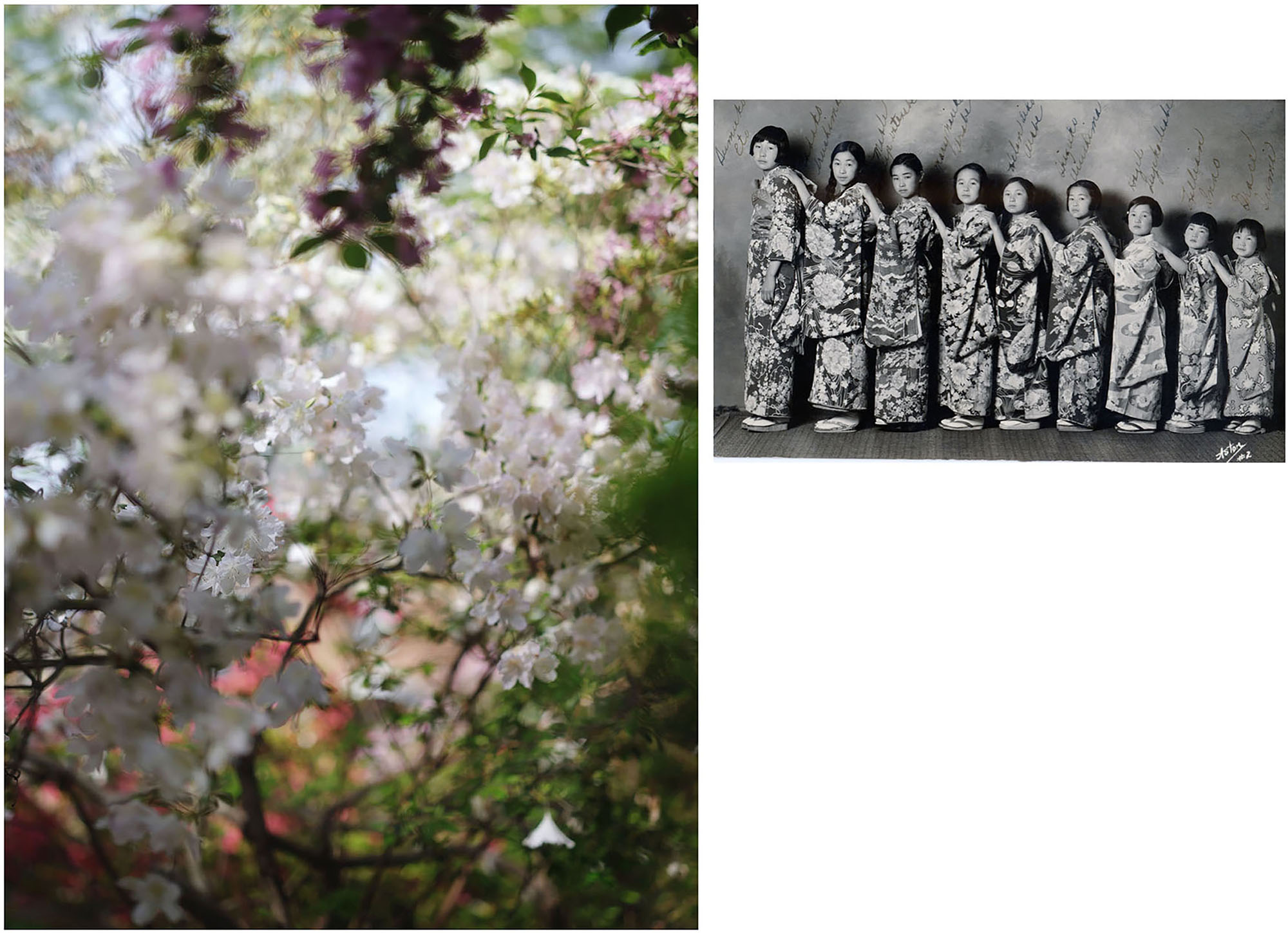
Jennifer Sakai
At first glance, the pairs of photographs that comprise Jennifer Sakai’s When We Return Home have an almost dreamlike connection. In each pair, the larger photograph of nature or quotidian domestic life dominates the space, yet offers an entry point to the postcard-sized archival family photograph alongside it. The calm quality of Sakai’s photographs belies the horrors within: a personal history of Japanese-American internment during World War II. After the war broke out, Sakai’s grandparents were removed from their homes in California and sent to a camp in Poston, Arizona. In fragments, Sakai shares a photograph of her uncles playing baseball in the camp, personal effects, and images from after the war, when the family relocated to the Midwest. The more recent photographs ground these moments in the present. (In one set, tree branches reach across the two images, tethering past to present.) The pairings make the process, in a sense, collaborative, says Sakai. “There was this unseen tether that was connecting their voice to my voice.”

Rachel Elise Thomas
Michigan-based interdisciplinary artist Rachel Elise Thomas is driven by a deep desire to honor her past. “I am collaborating with memory, a spirit, and my environment,” she says about her series Crowded House, which engages with her relationship to her family home in the suburbs of Detroit, where she moved in 1993. Drawing from her experience with collage, Thomas uses photography and projection to produce palimpsests of image and memory. The approach is direct and powerful; Thomas projects 4-by-6-inch family photographs onto the rooms of her home, and then captures the result with a digital camera. These rooms serve as both a place and prompt for her memories—which include birthdays, holidays, and homecomings—and give her family archive a new, glowing physicality. In this way, the series enacts both a resurrection and a reexamination. “These memories perpetually overlap,” says Thomas, “and depending on the image’s placement, the composition changes, and so does its narrative.”
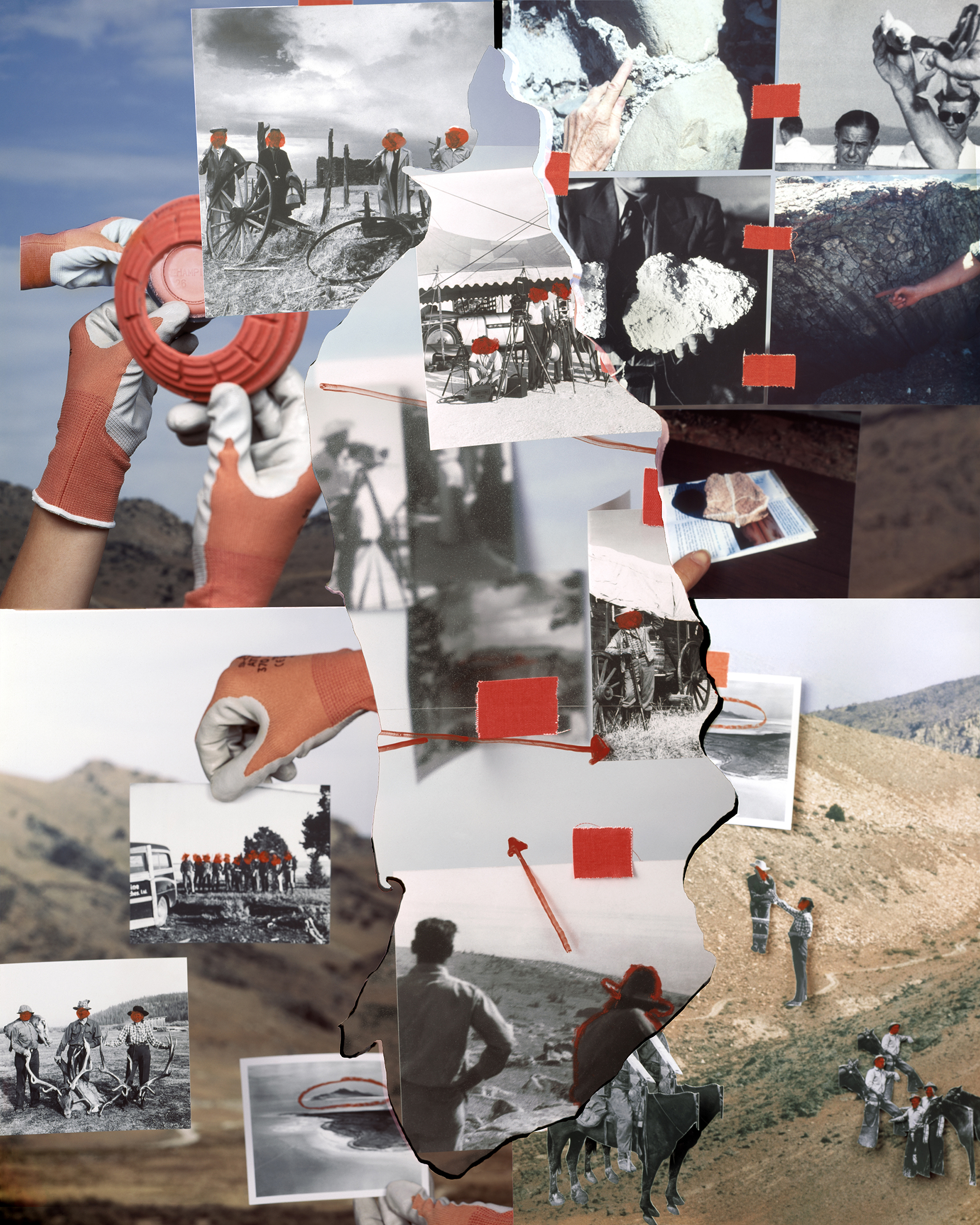
Jaclyn Wright
When Jaclyn Wright moved to Salt Lake City, in 2018, she says, “it was the first time that I could really visibly see the climate crisis playing out in real time.” In High Visibility (Blaze Orange), Wright photographs Western landscapes to explore the visual and material history of climate change, land expansion, and capitalism. Utah’s West Desert includes the rapidly drying Great Salt Lake, the Dugway Proving Ground, and various mineral extraction sites, but Wright focuses on the improvised gun ranges that dot the public land. “It’s this Hollywood Western mythology,” she says, “this idea of playing out that fantasy on this land that has been stolen, and is now public, is why those sites are so jarring.” Wright first collects objects and debris left behind at the gun ranges, makes photographs at each site, and then creates a collage in her studio, adding images from university and historical archives. Visually and conceptually dense, each piece forms a critical treatise on the built environment of the American West.
Artist statements by Eli Cohen and Varun Nayar.



